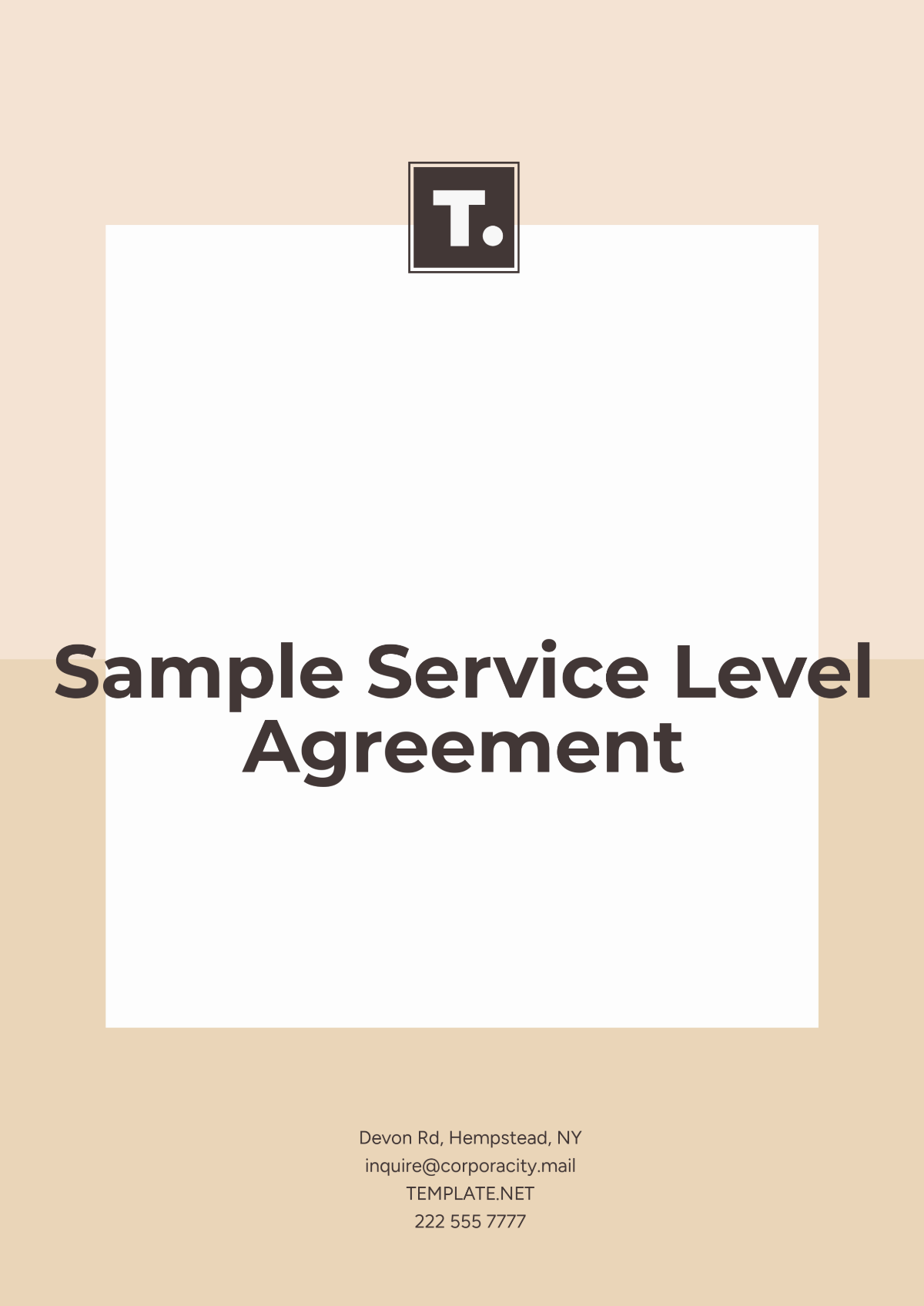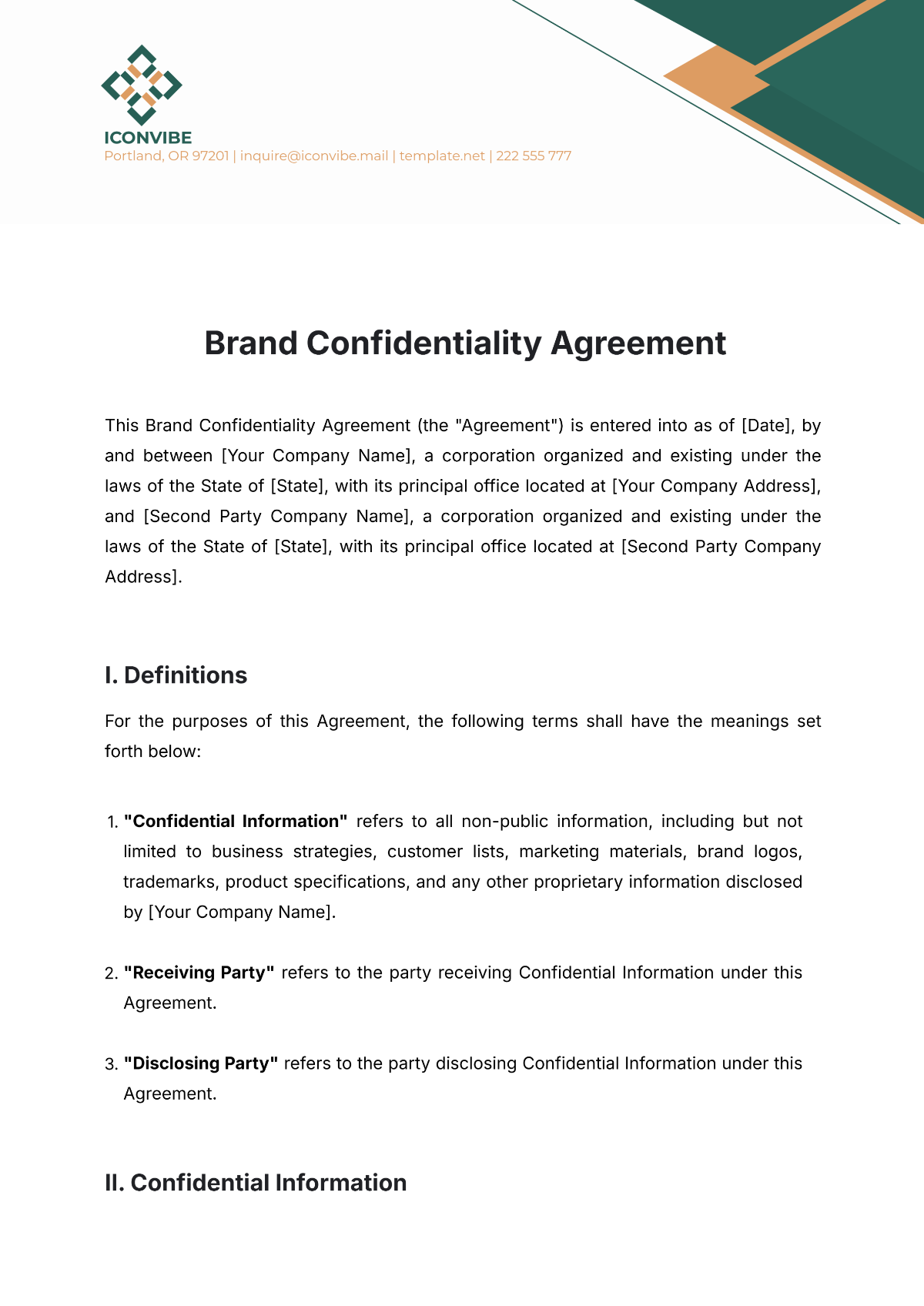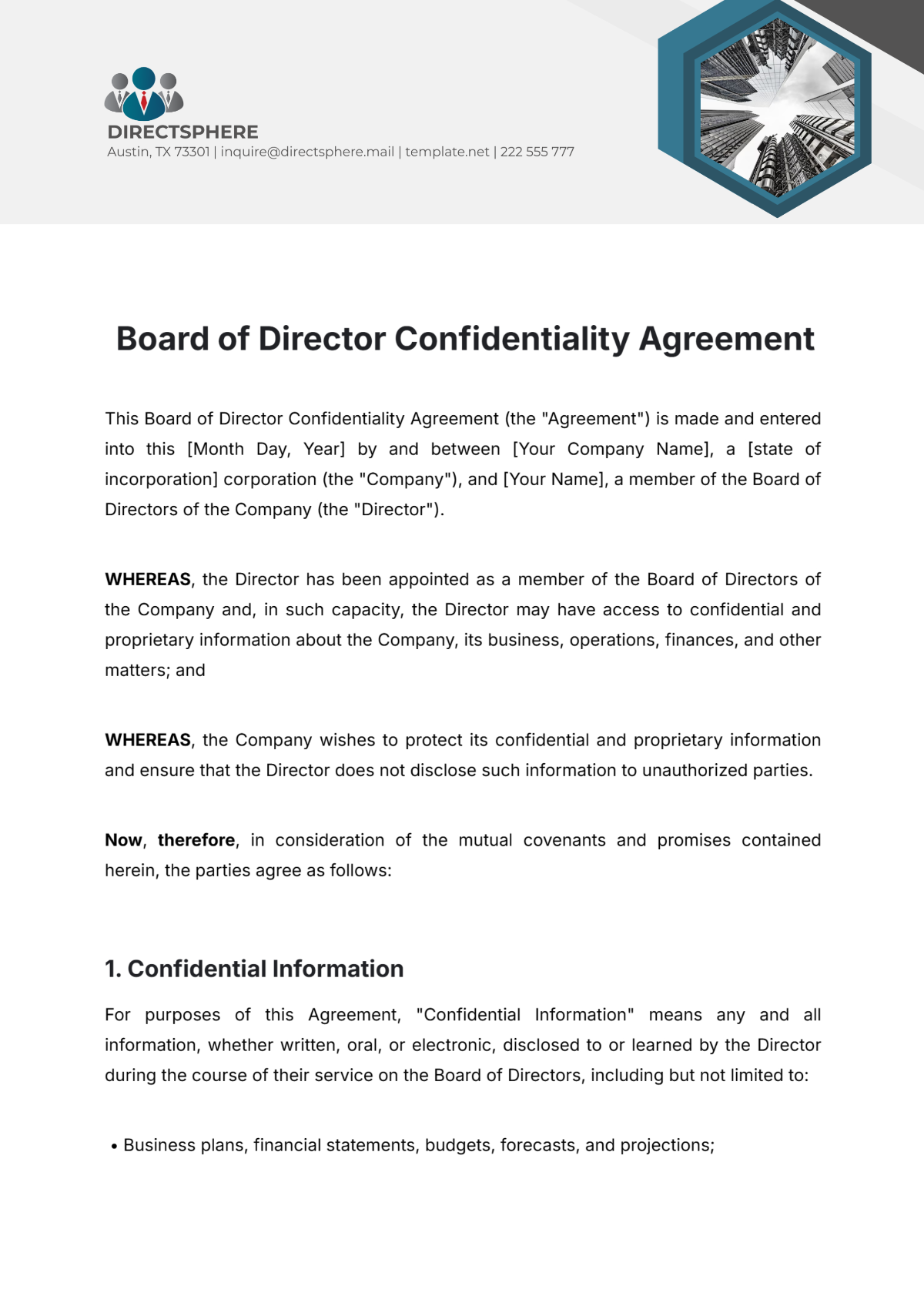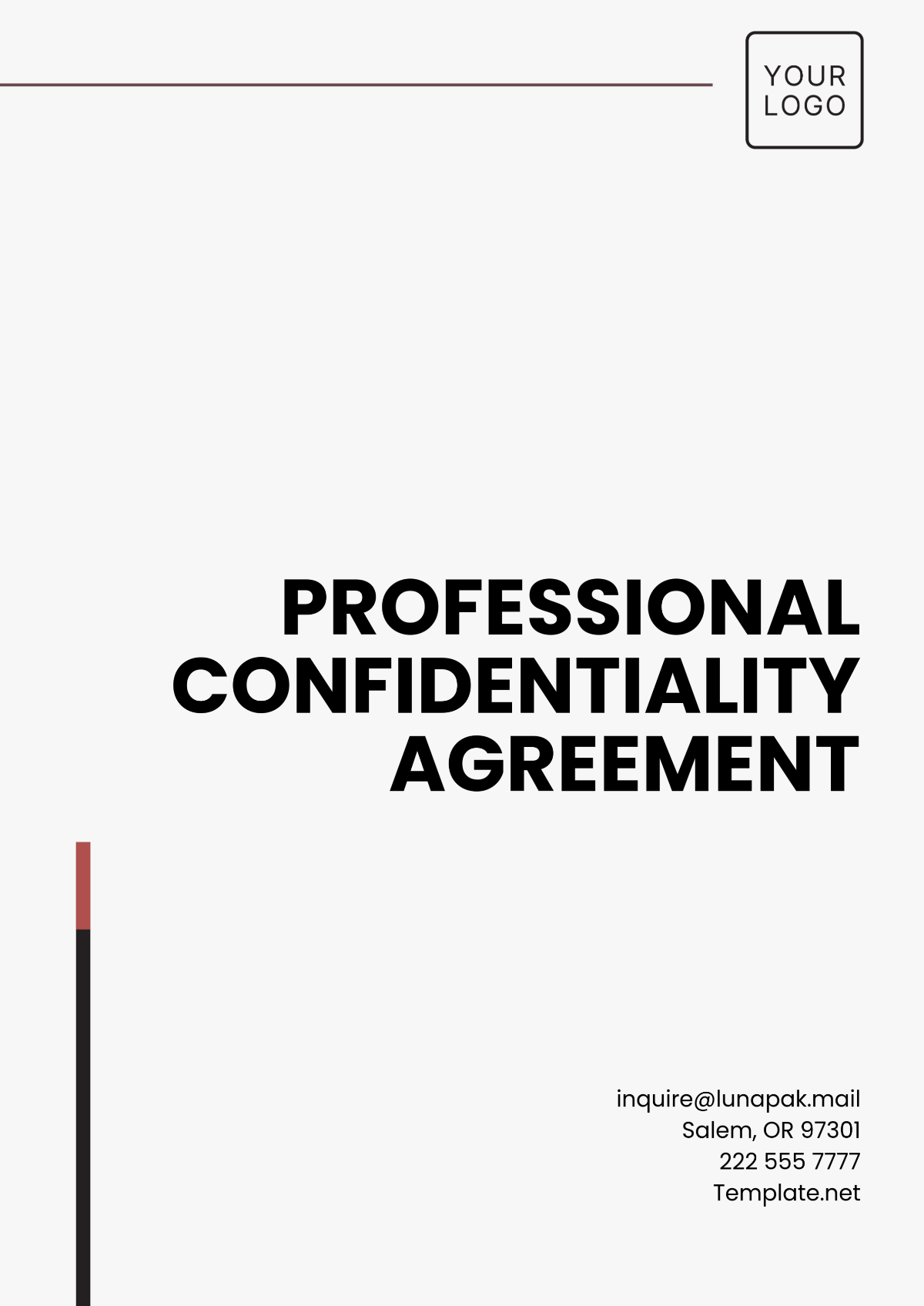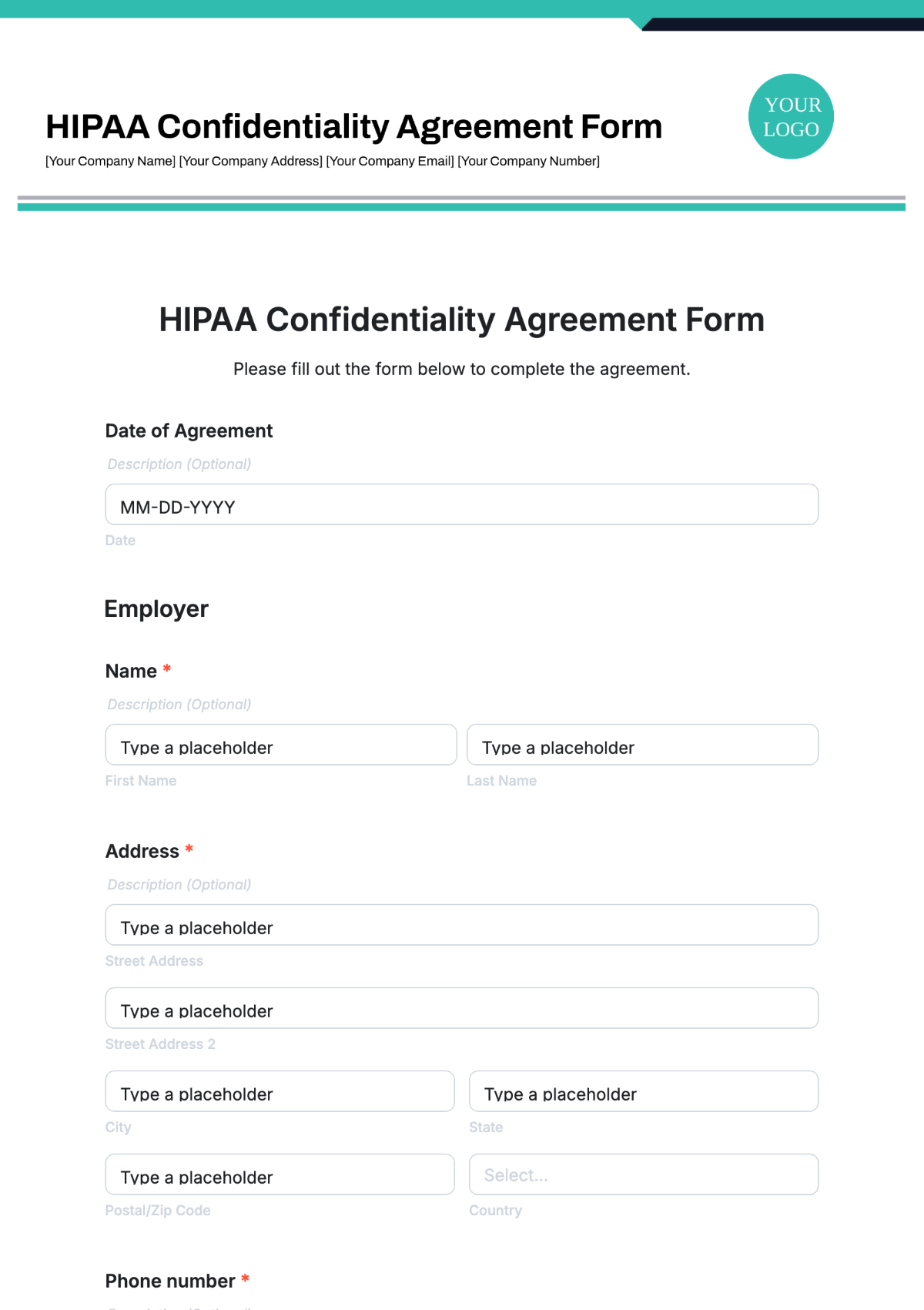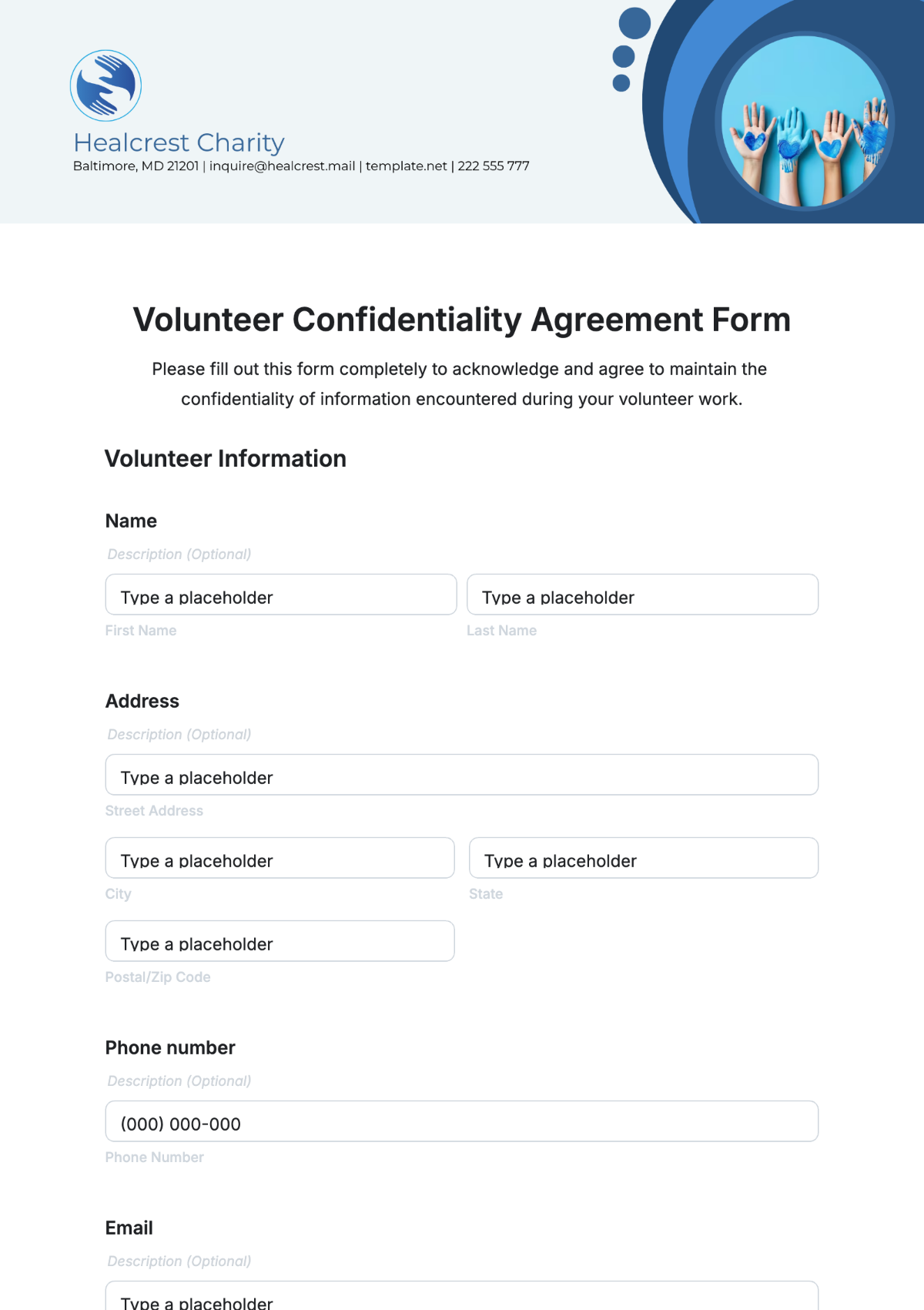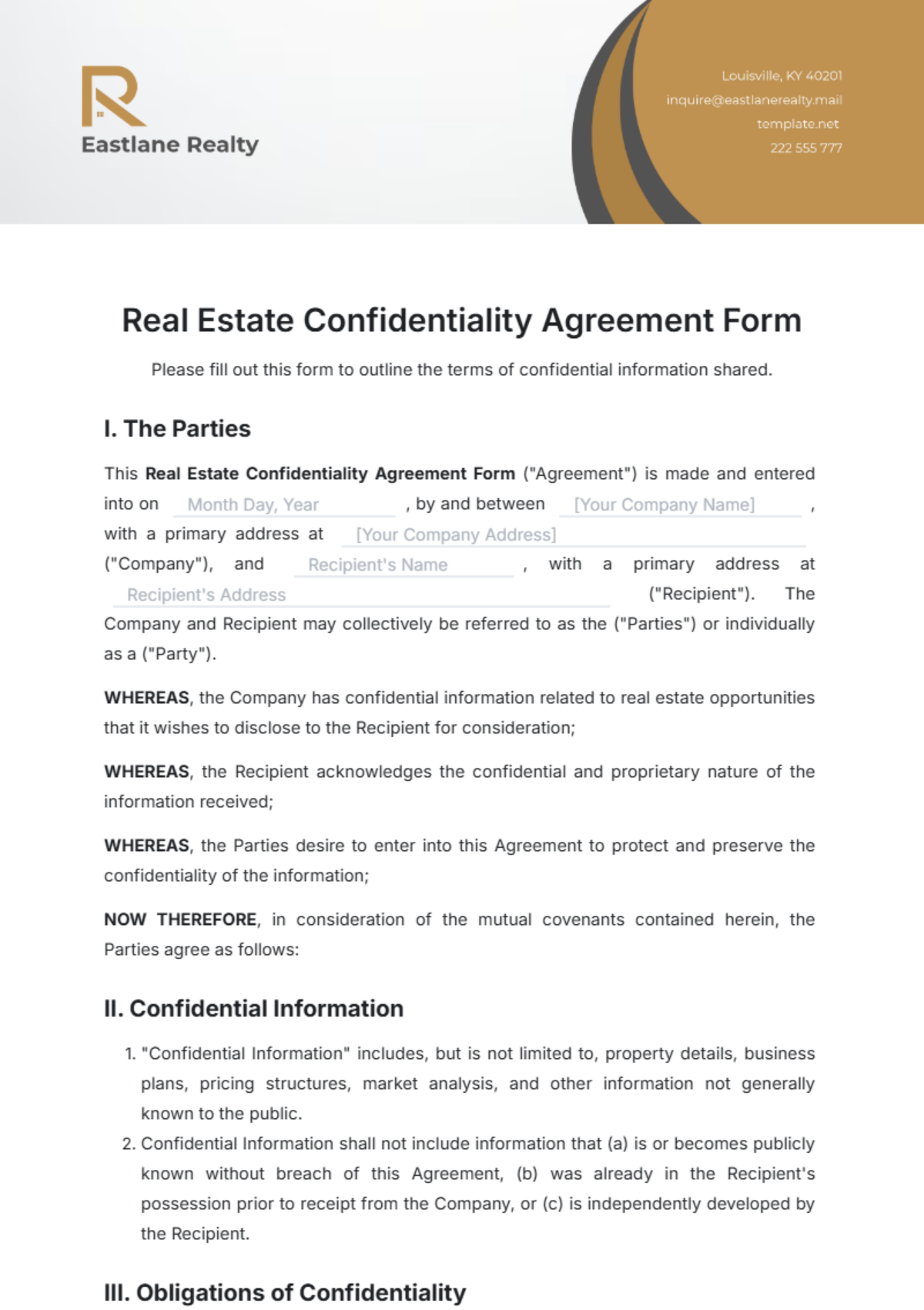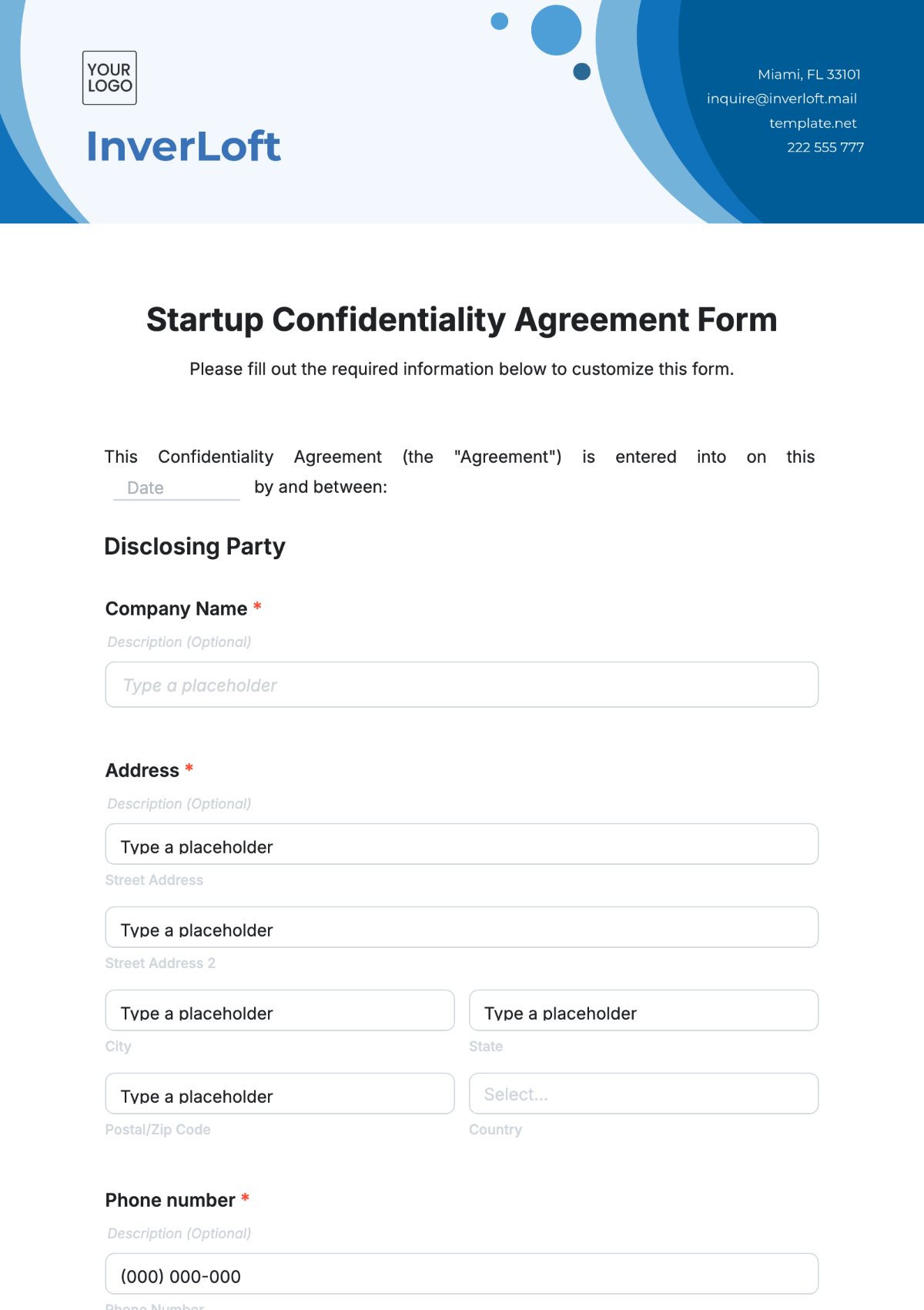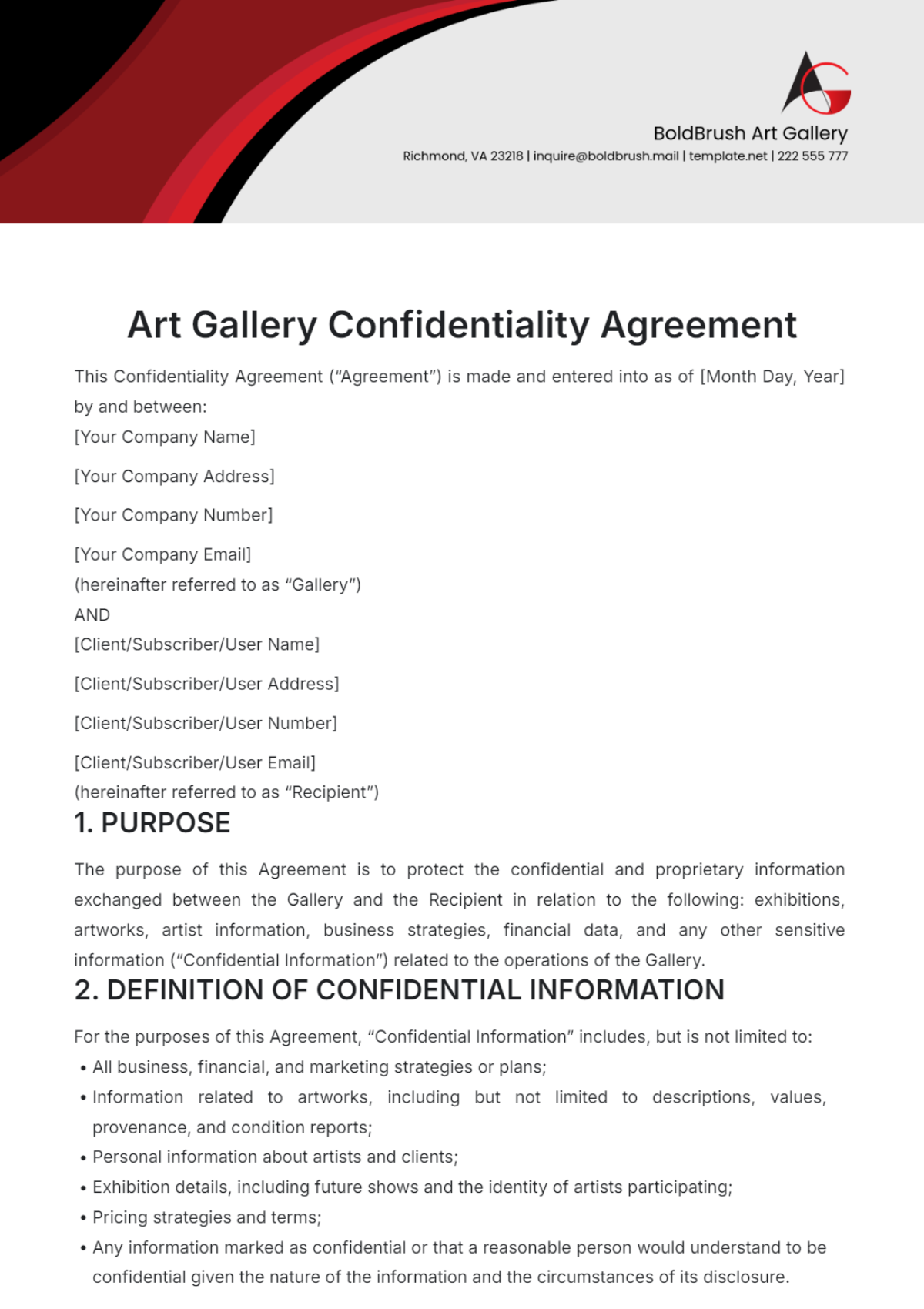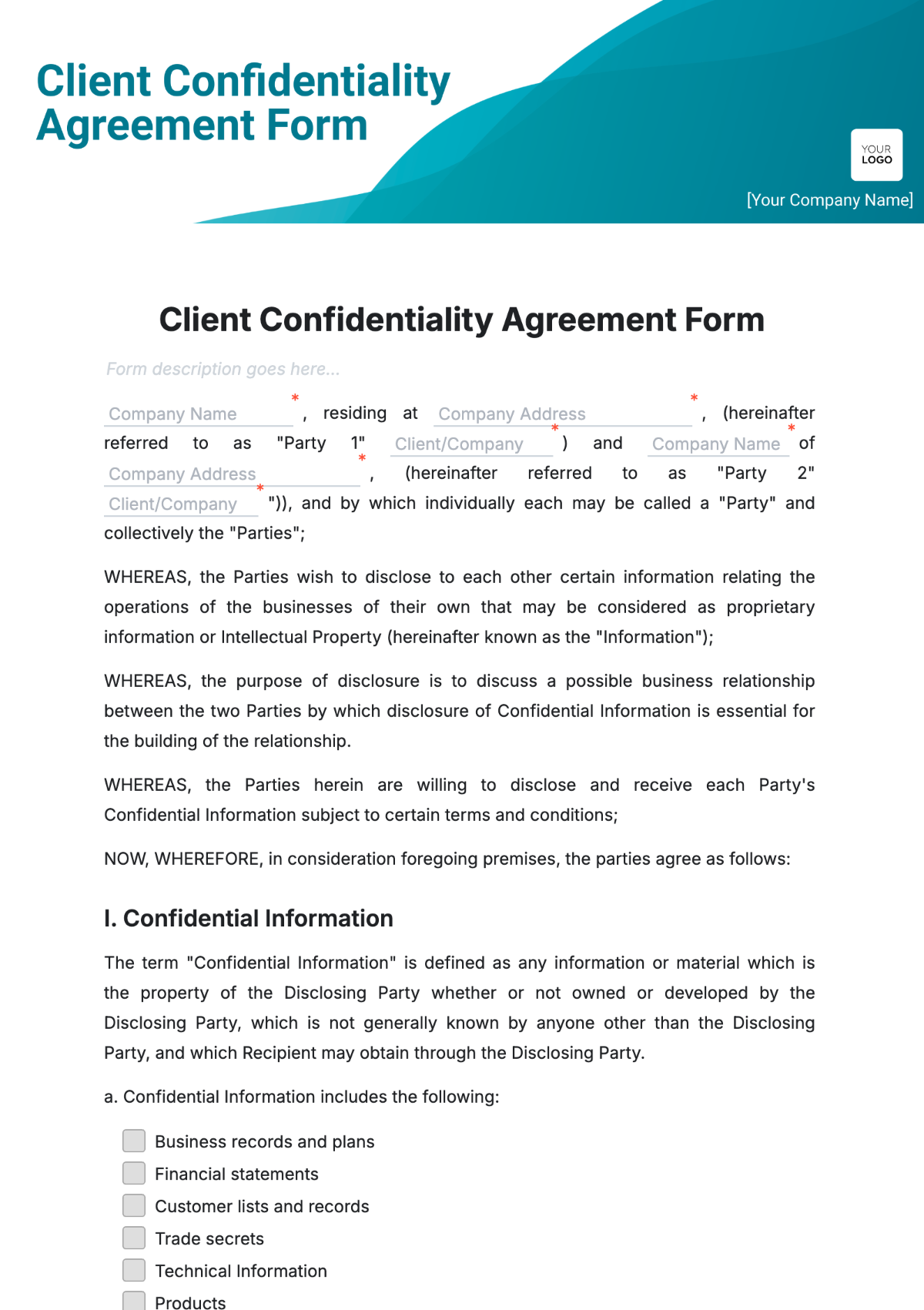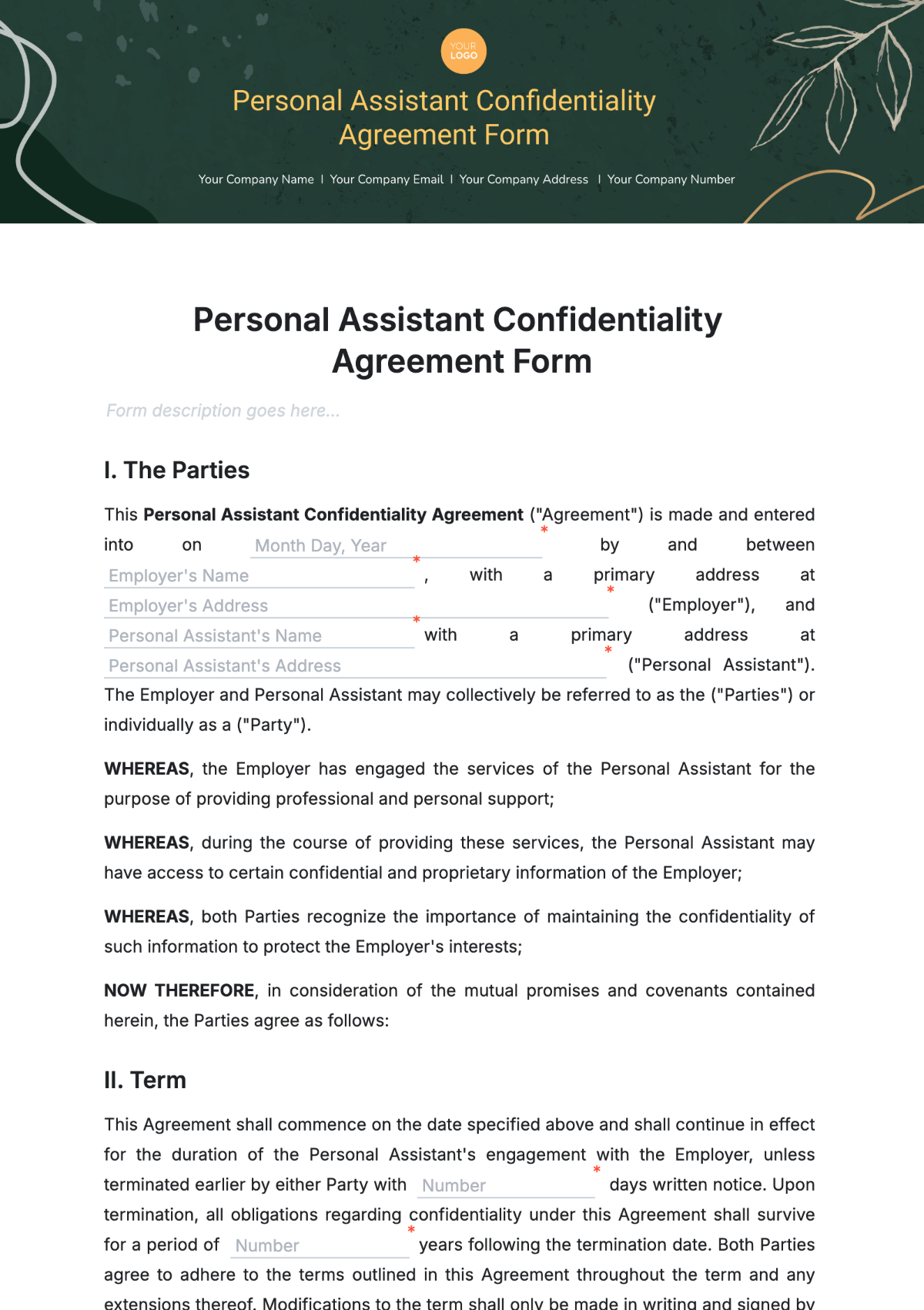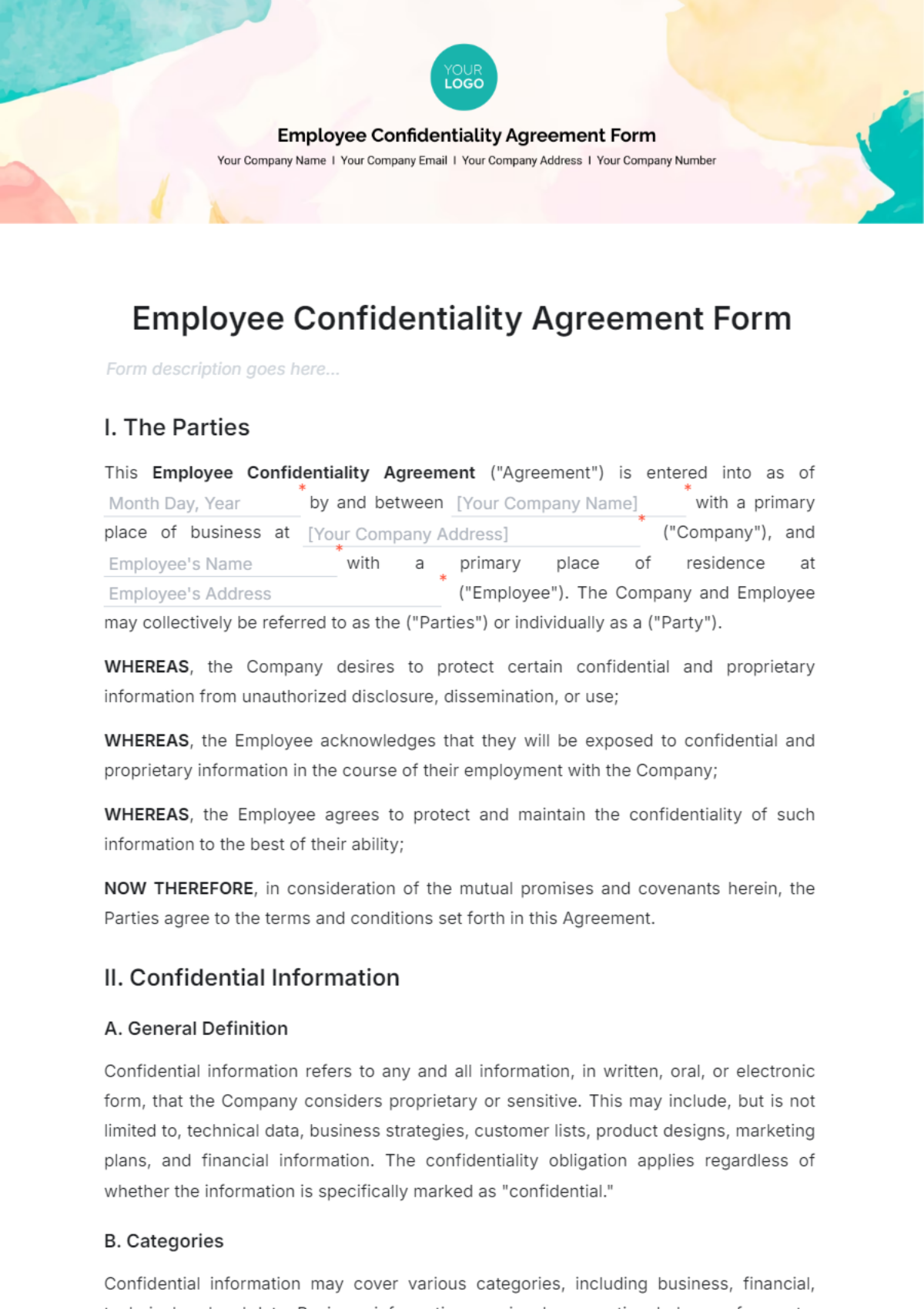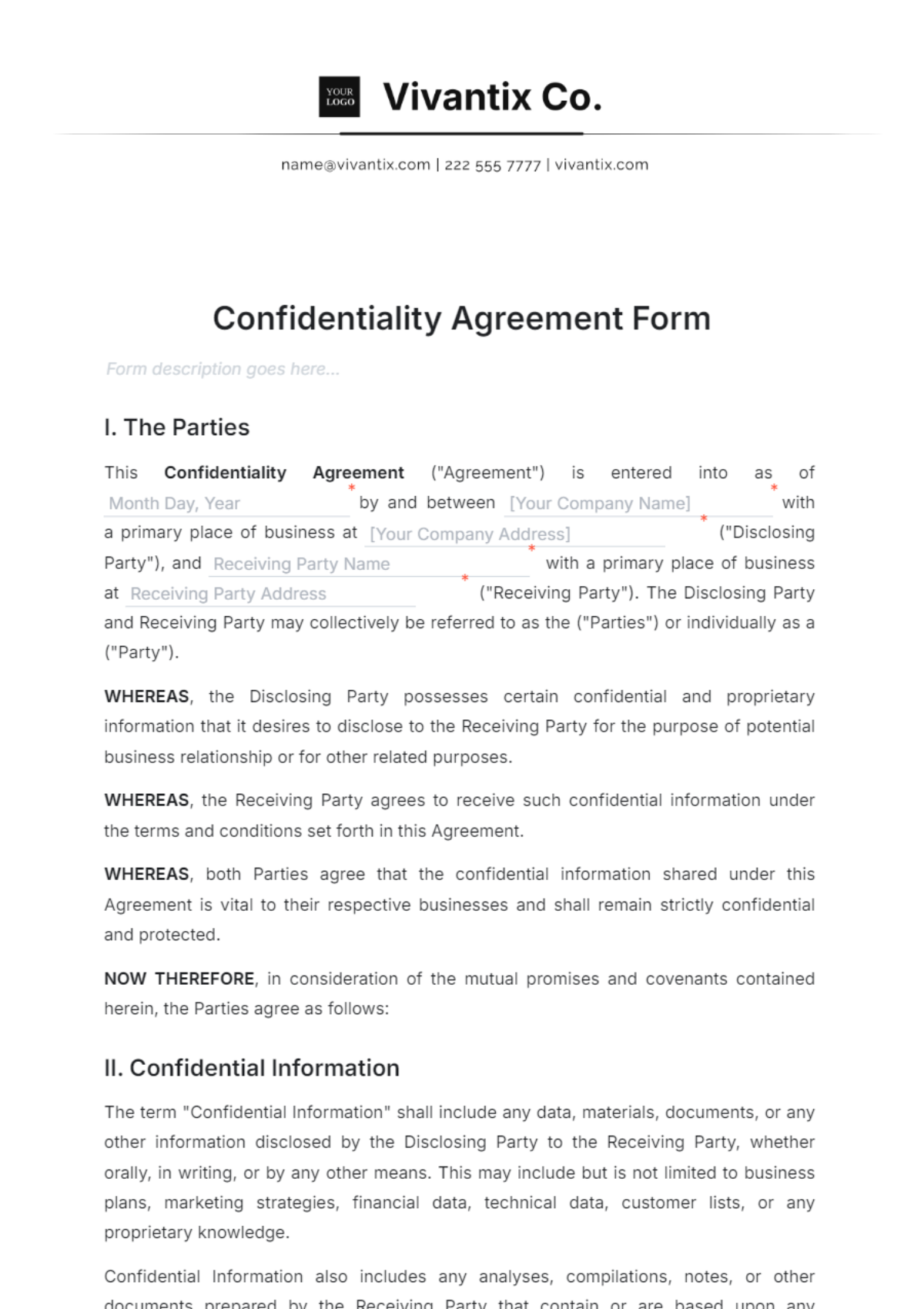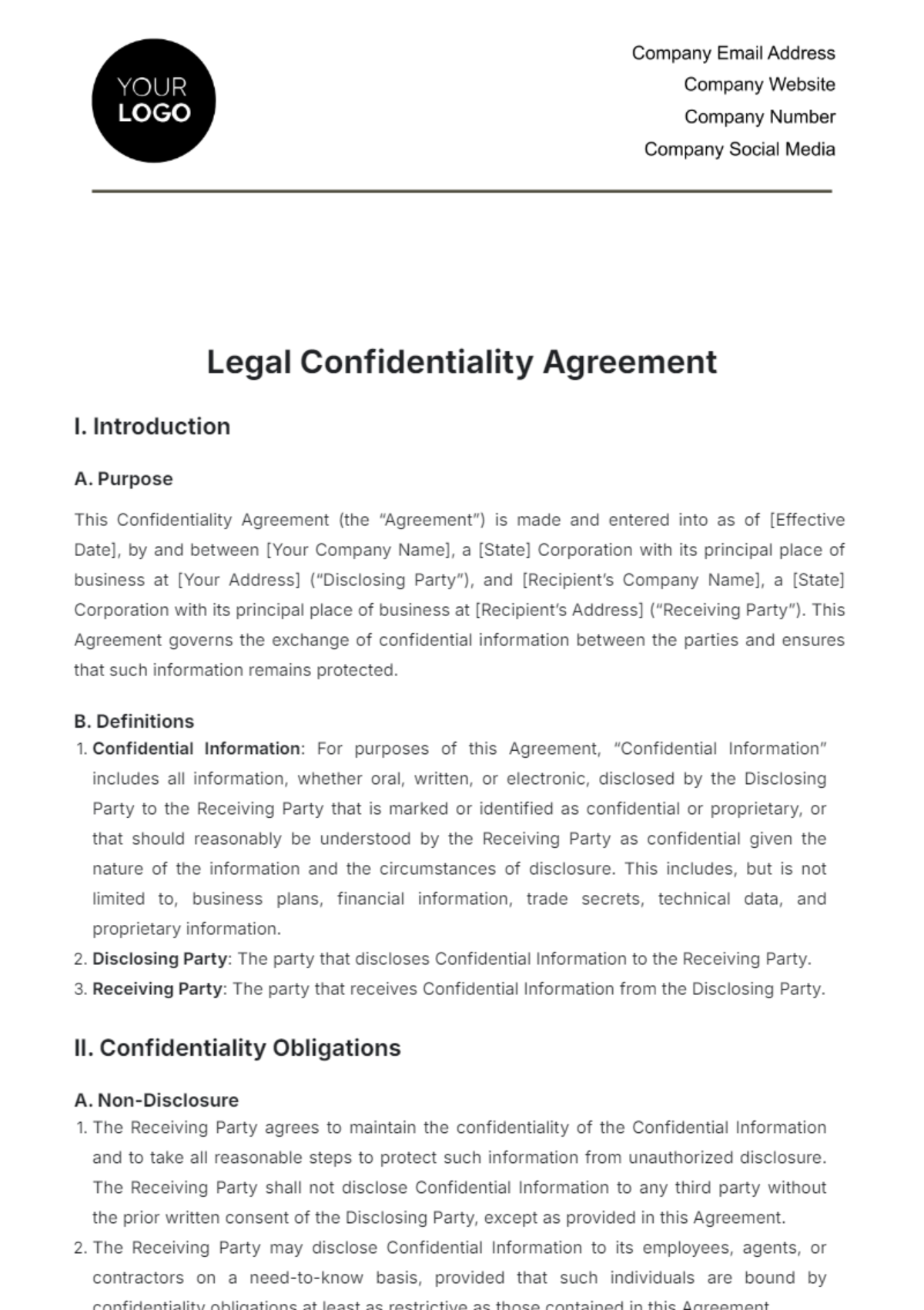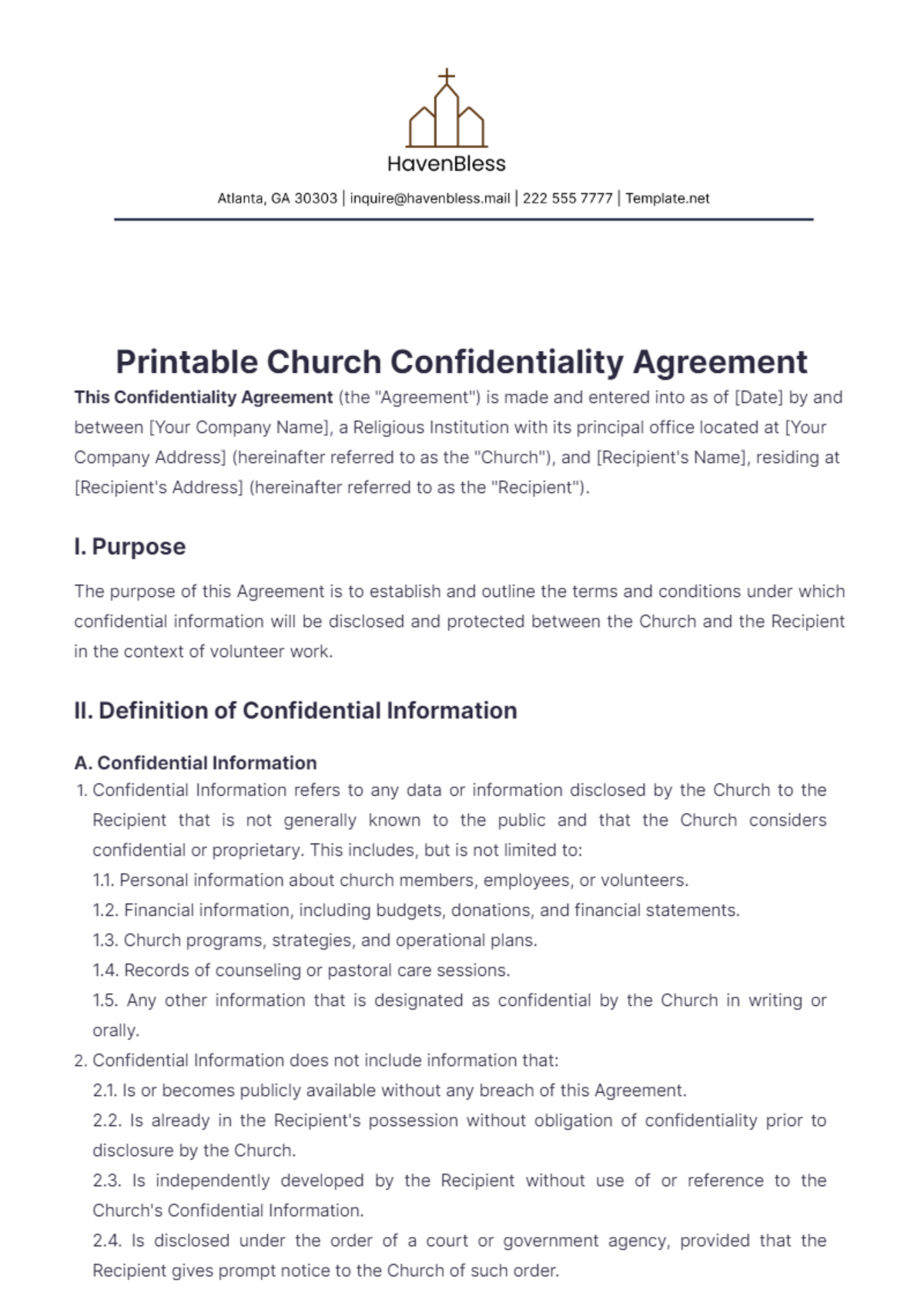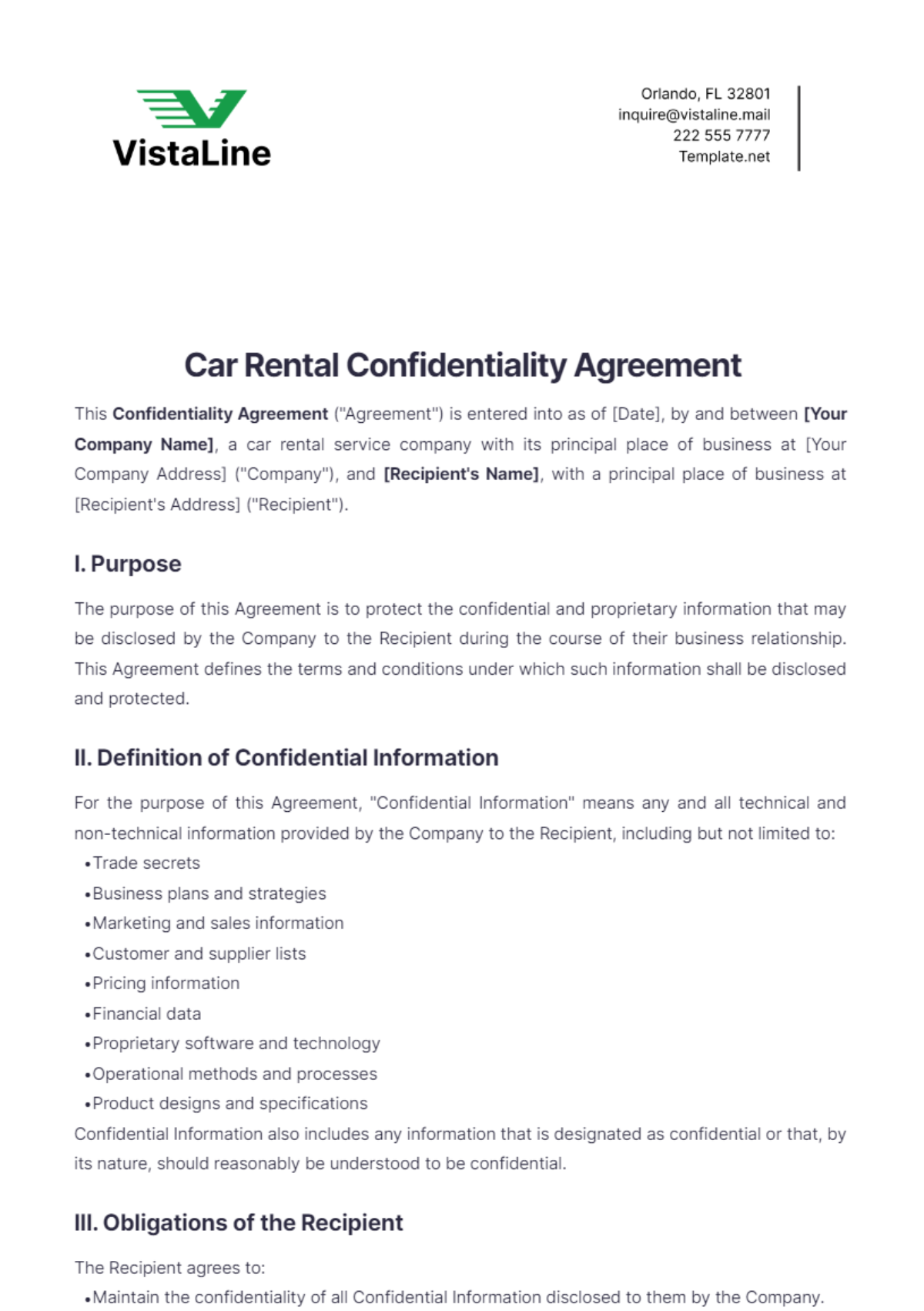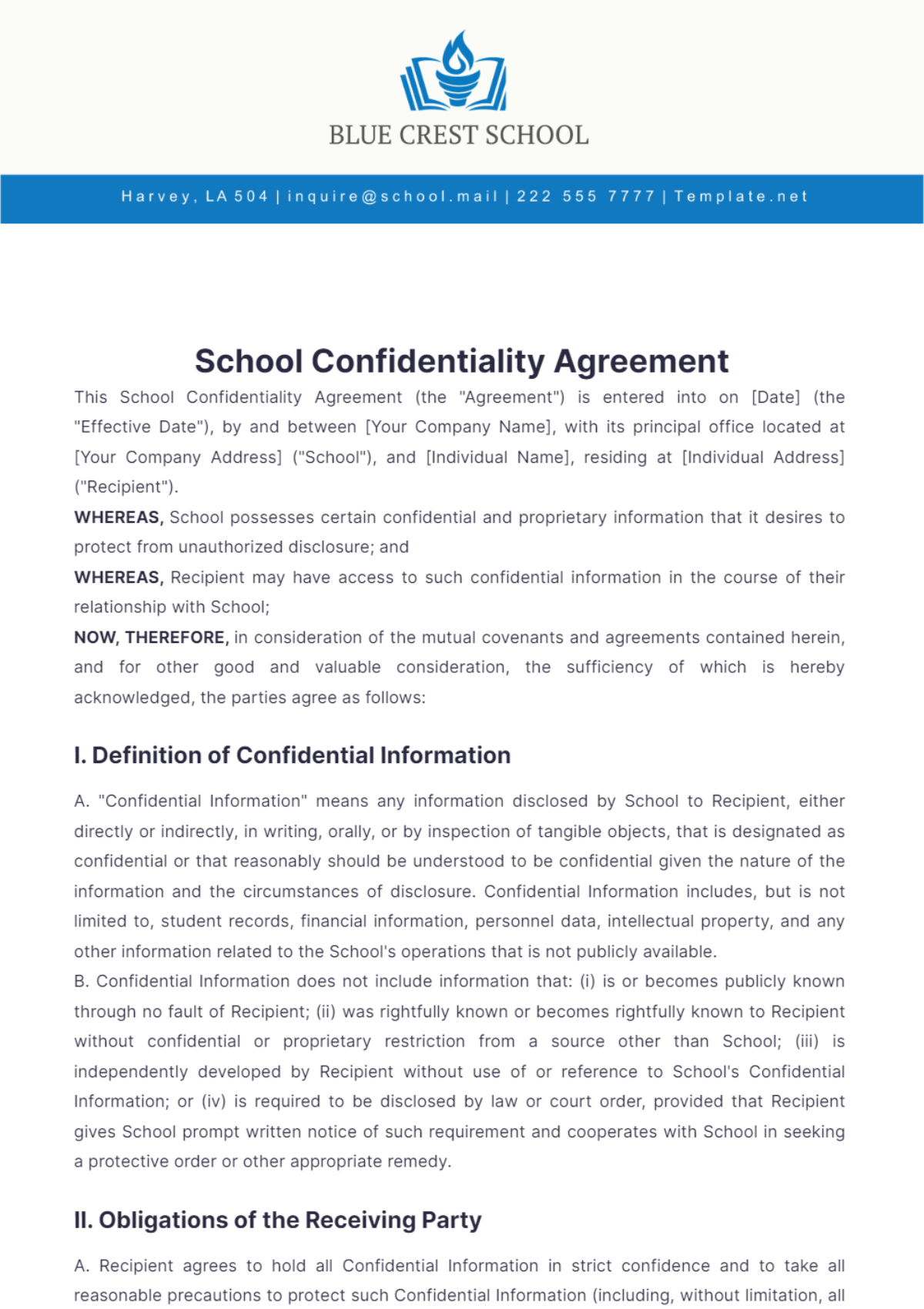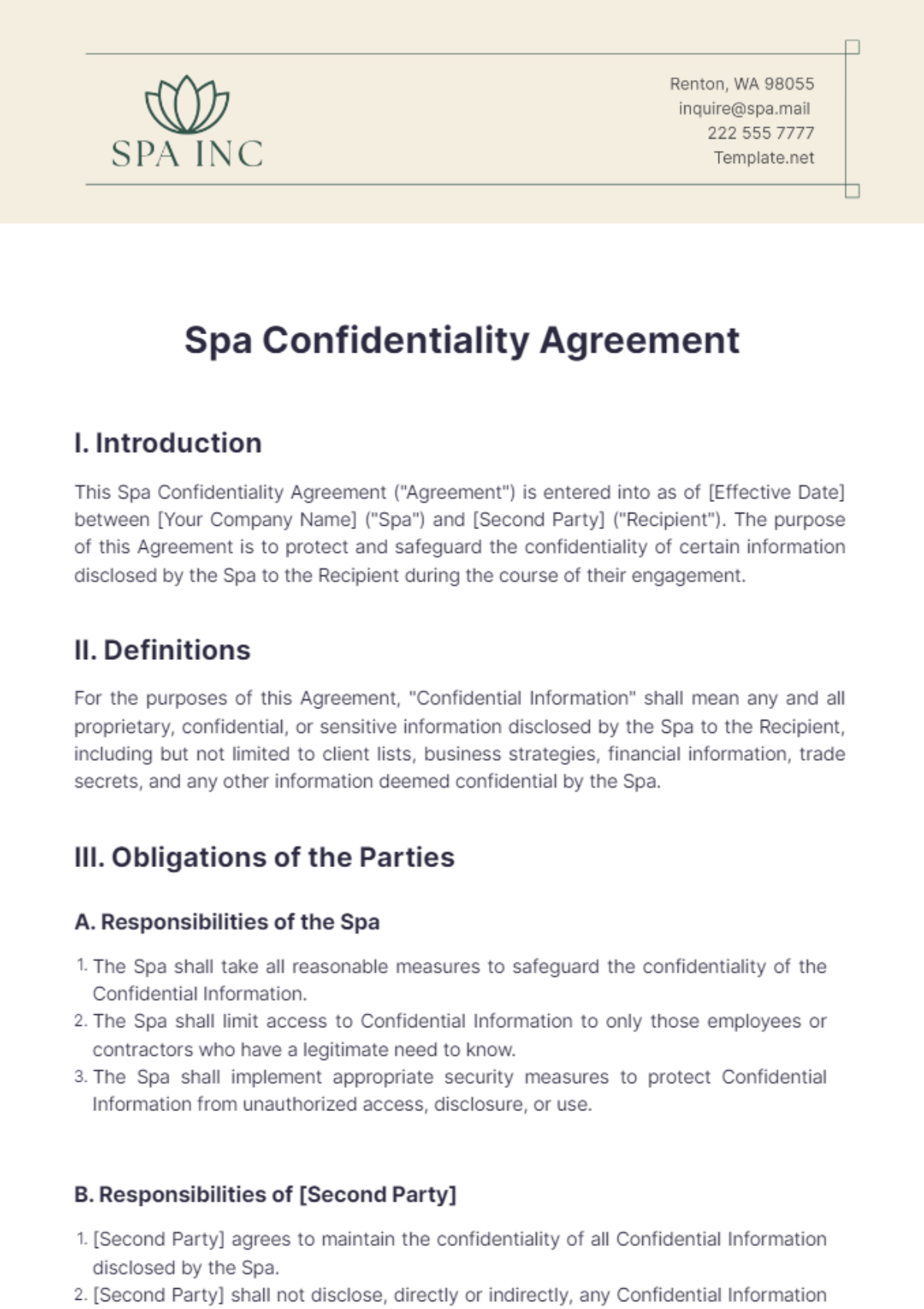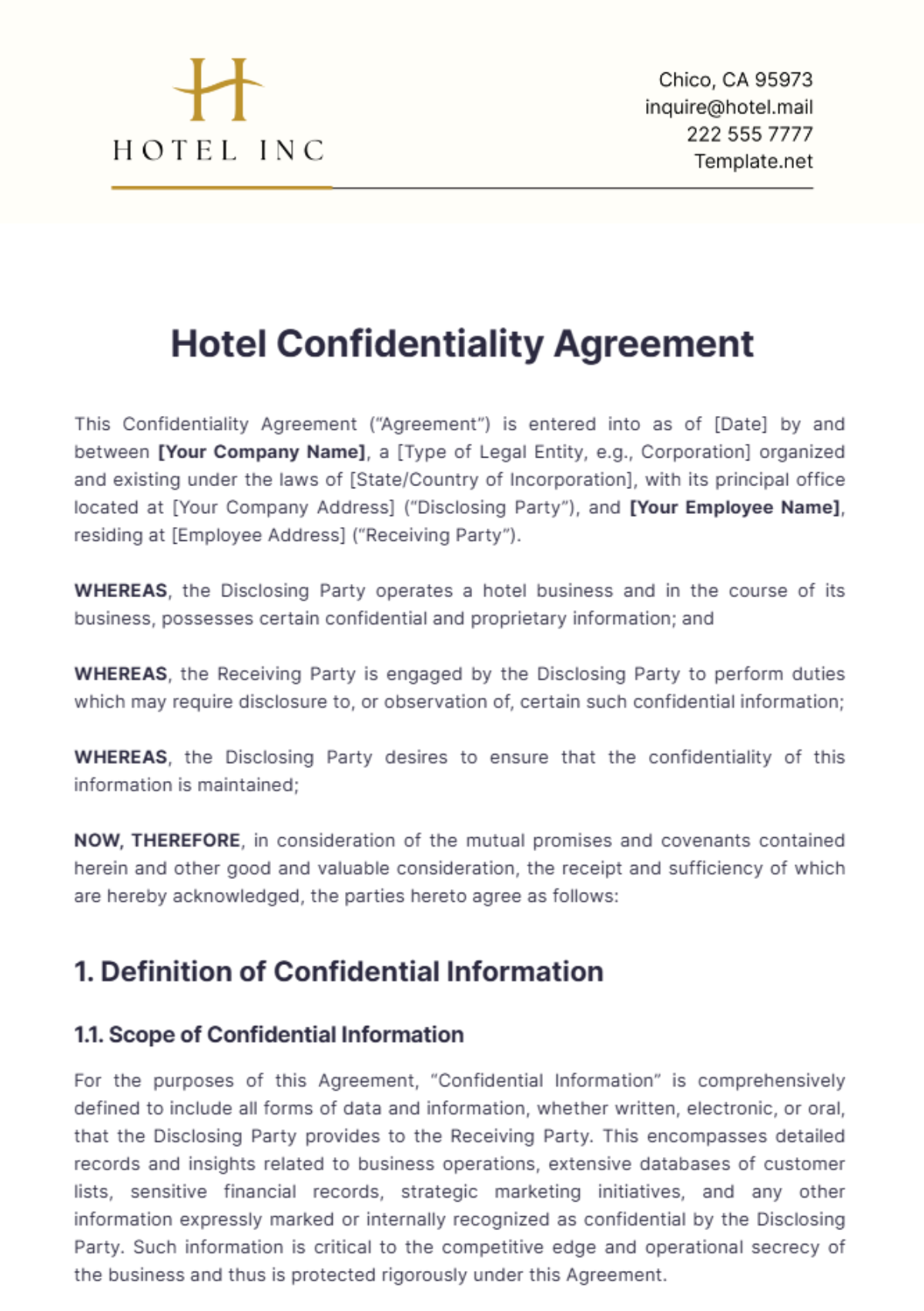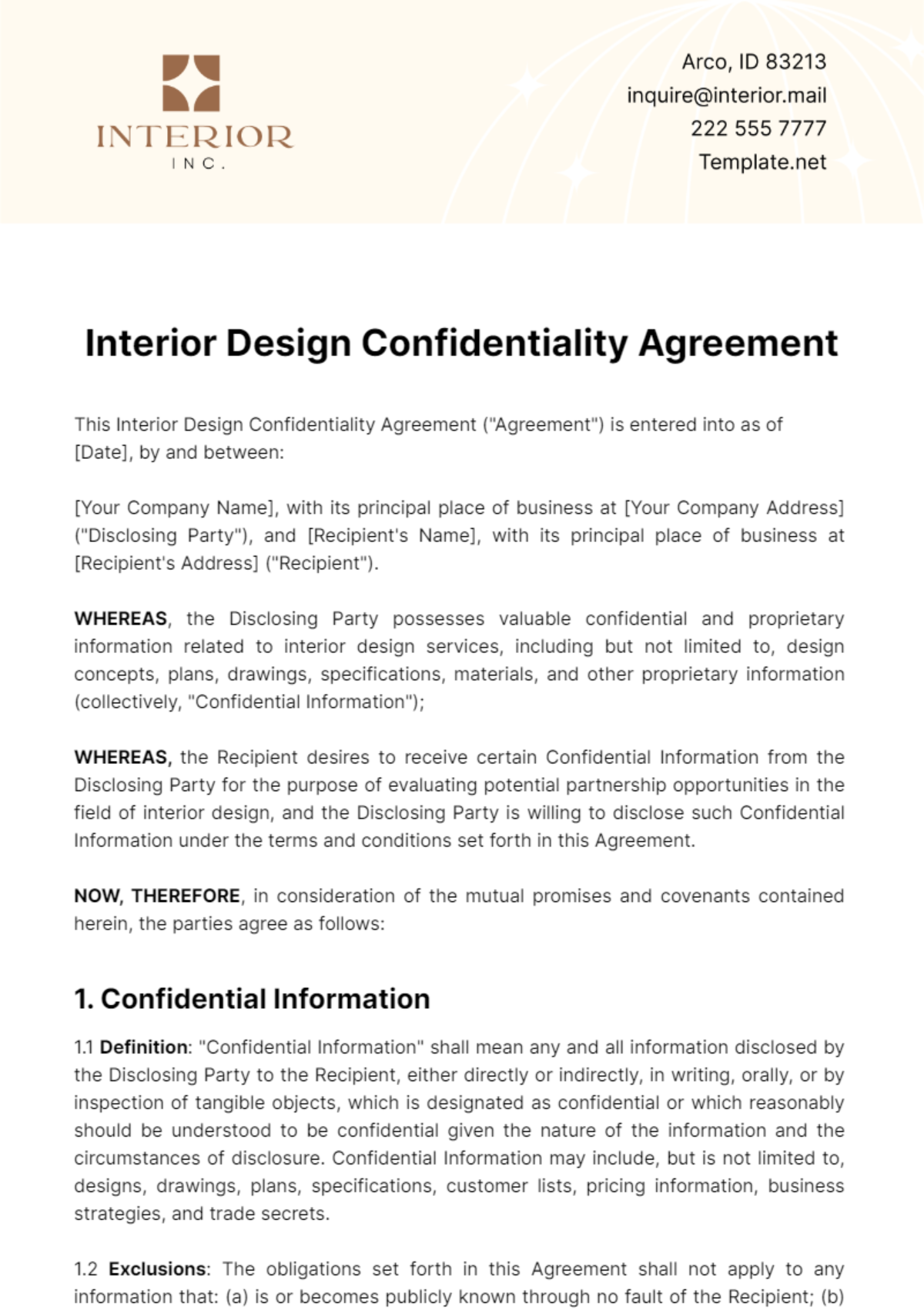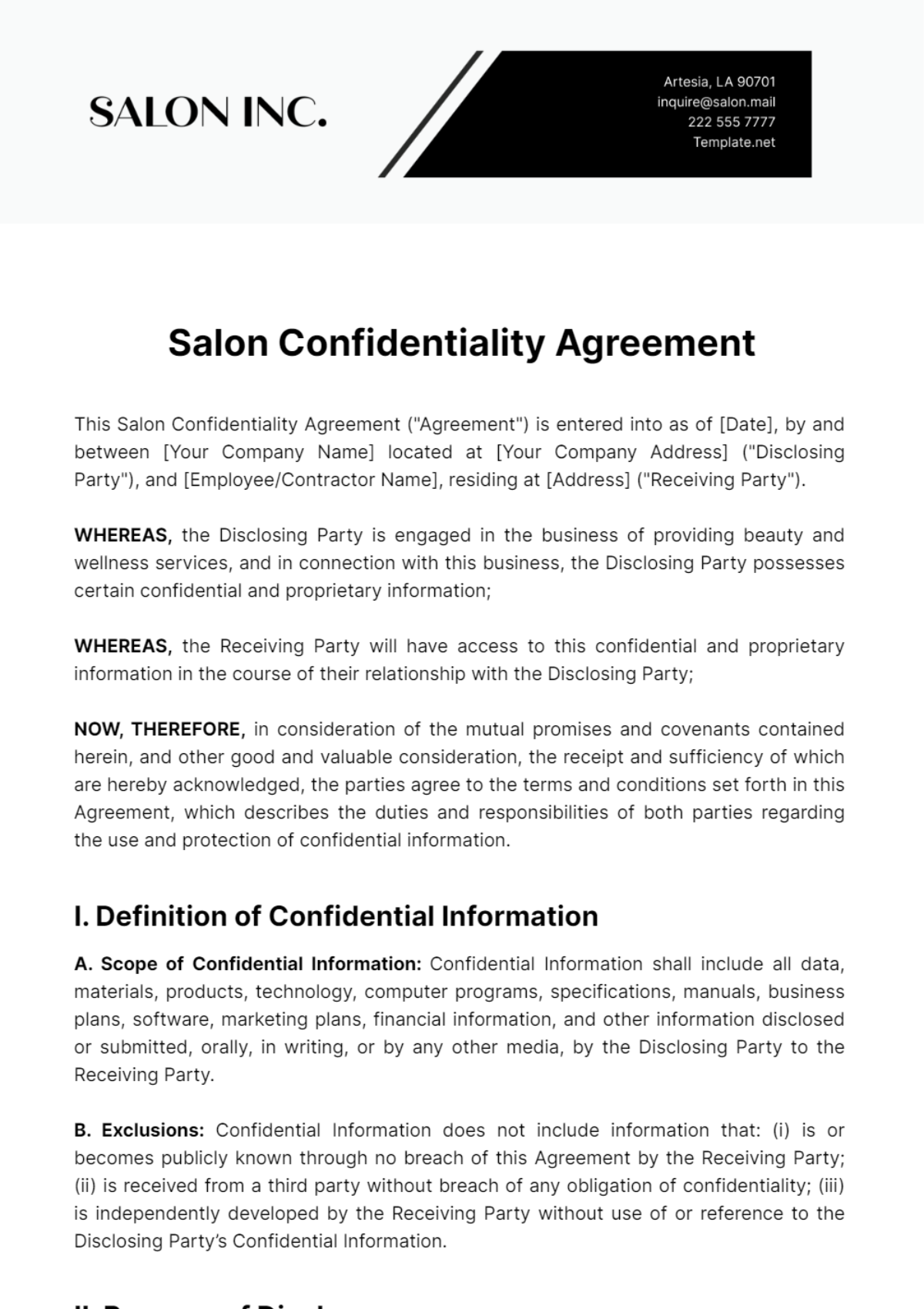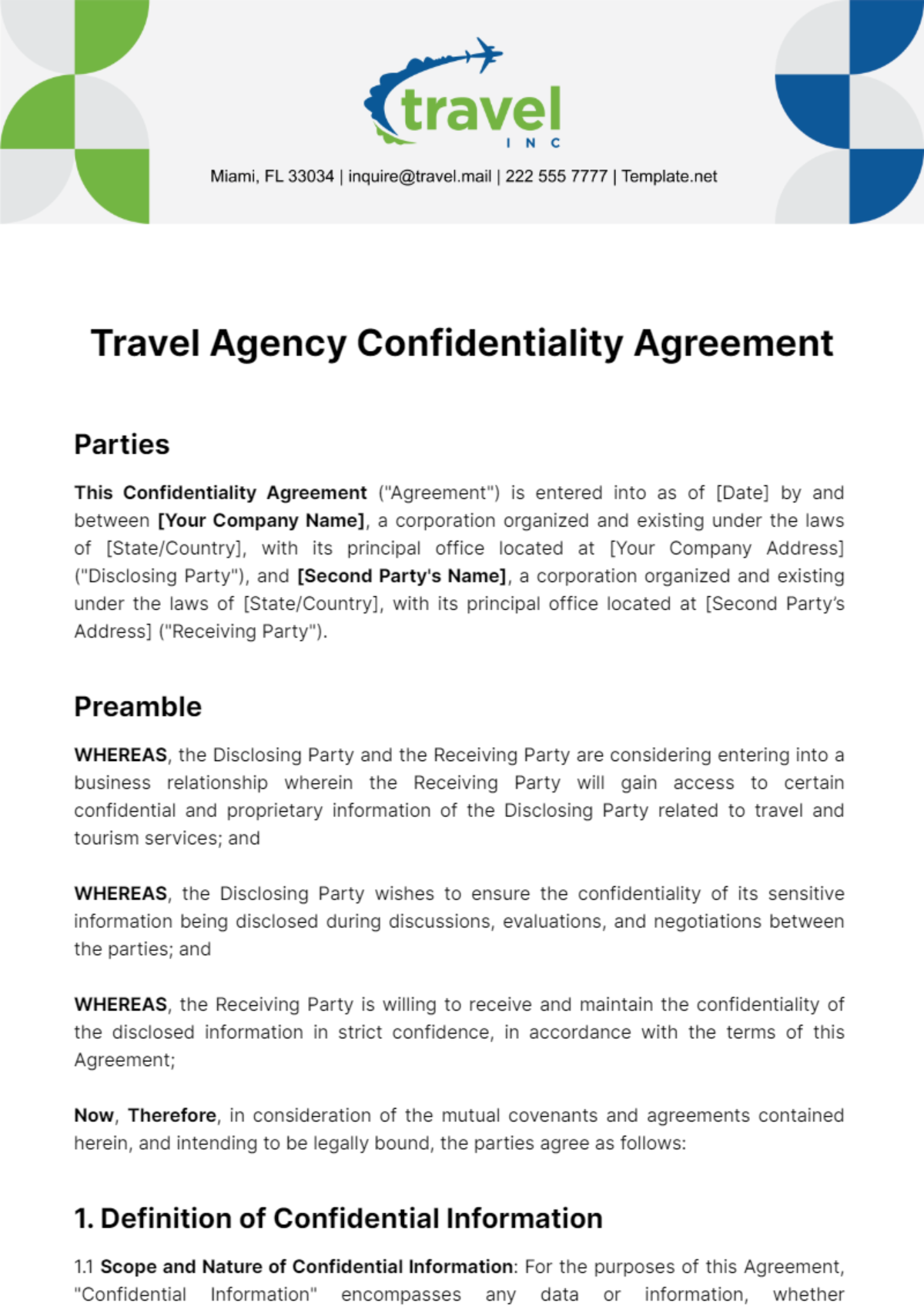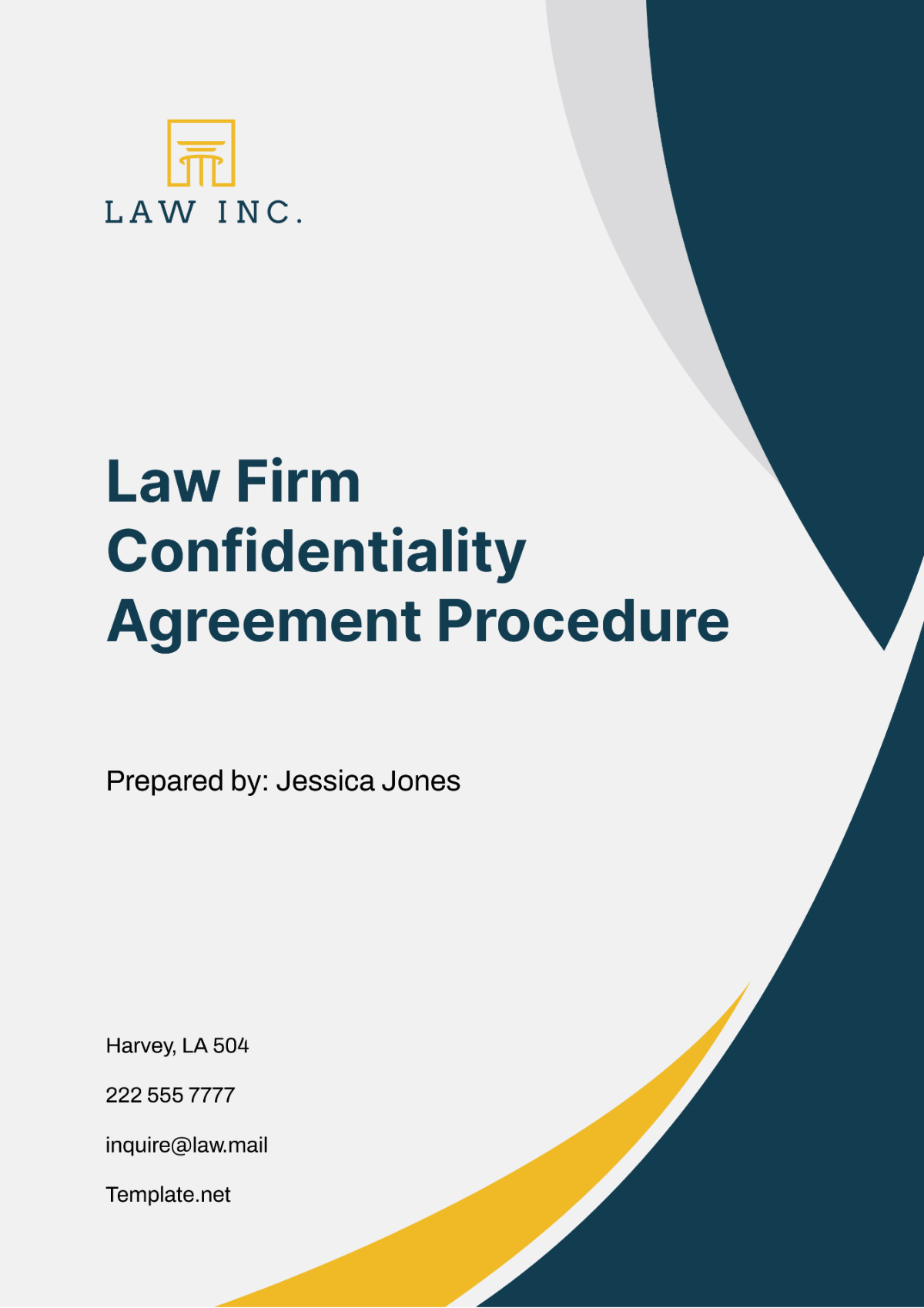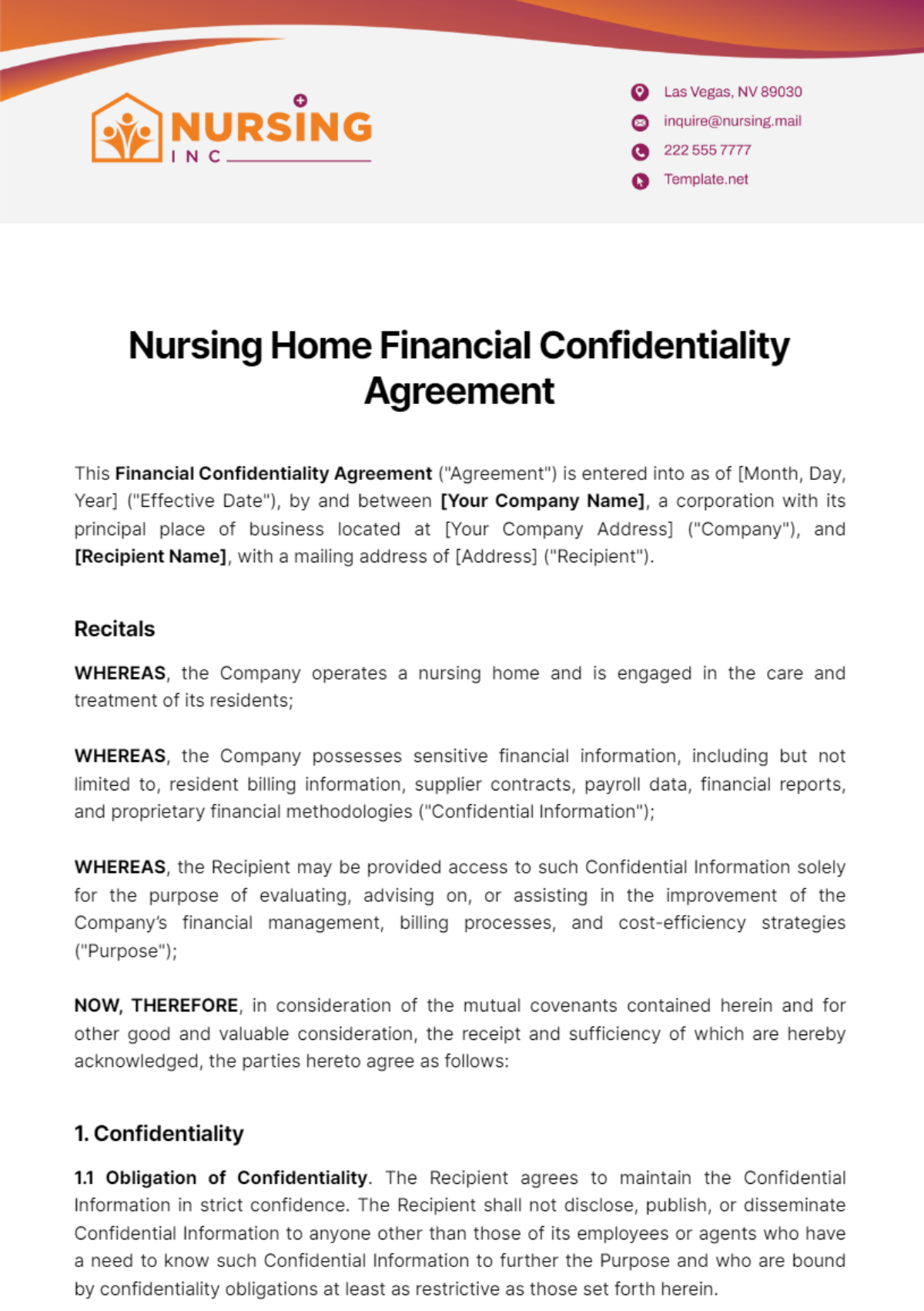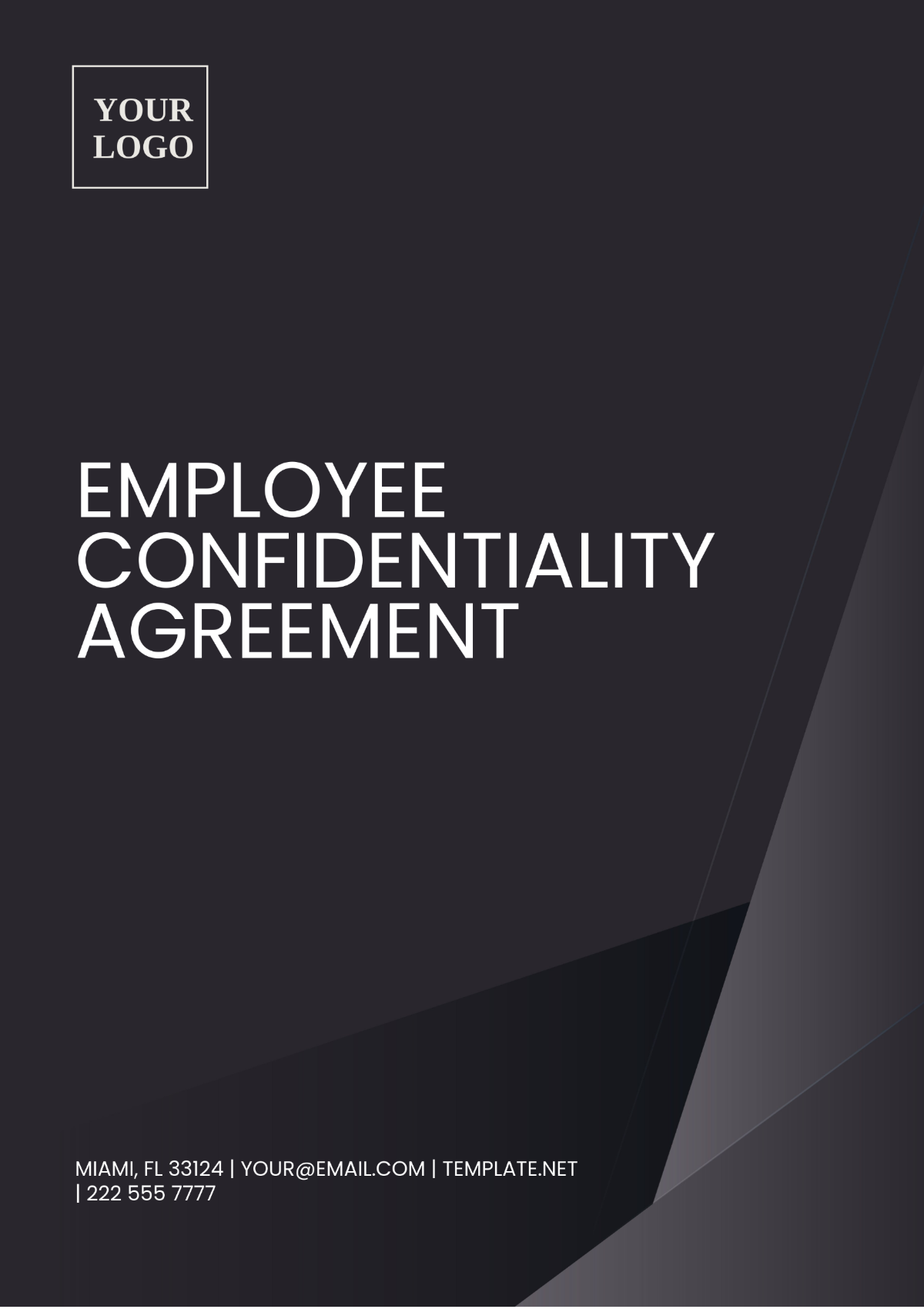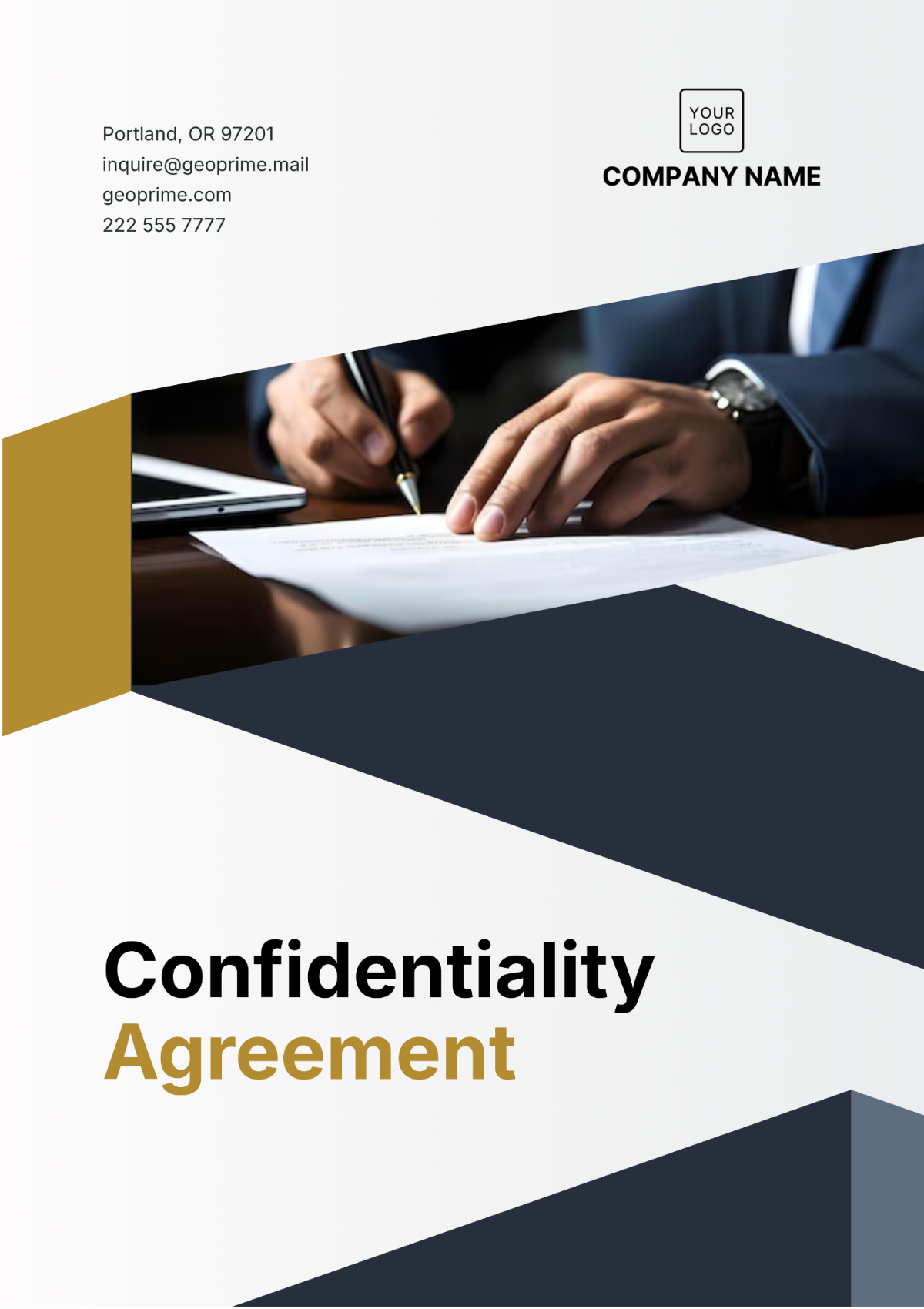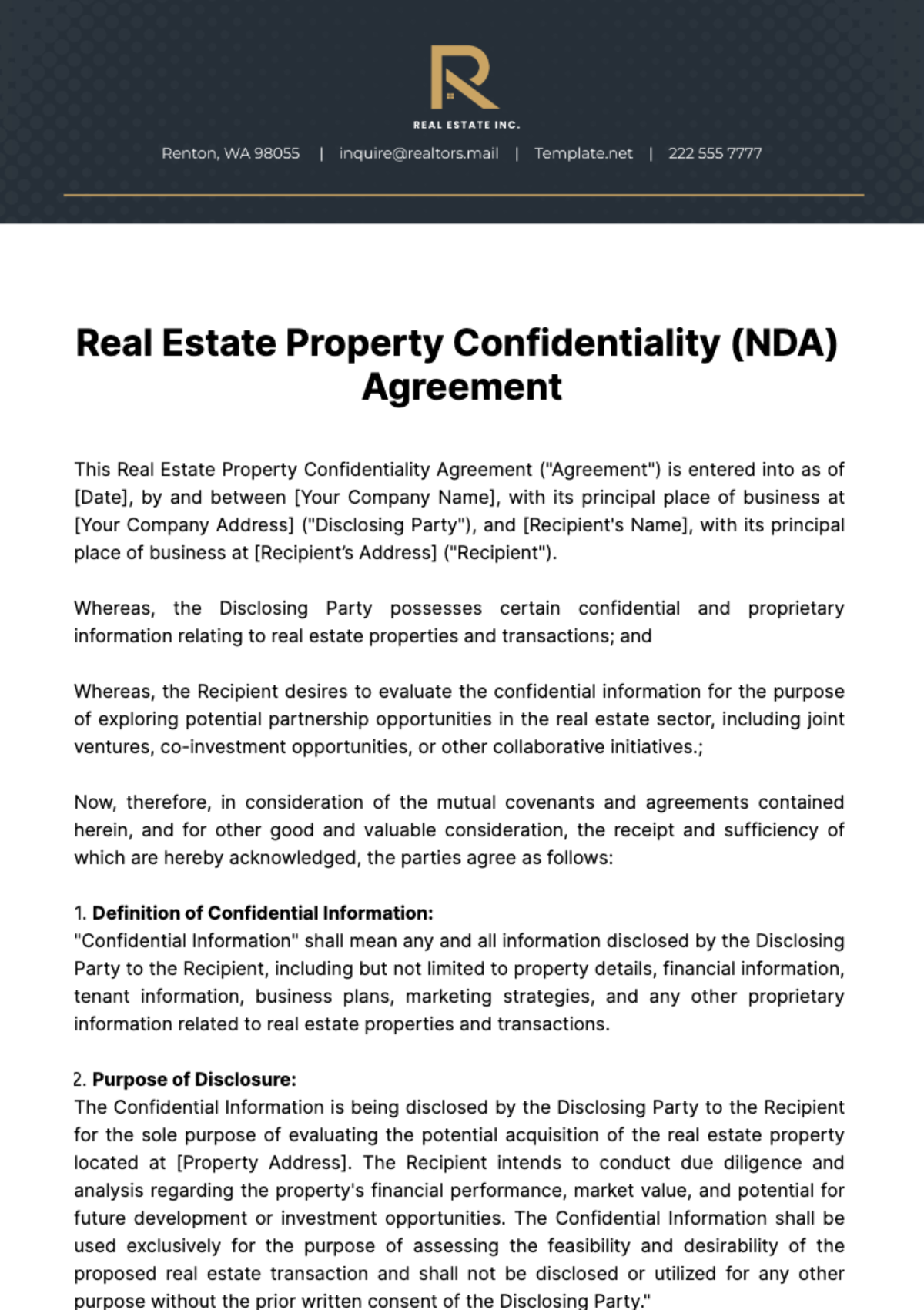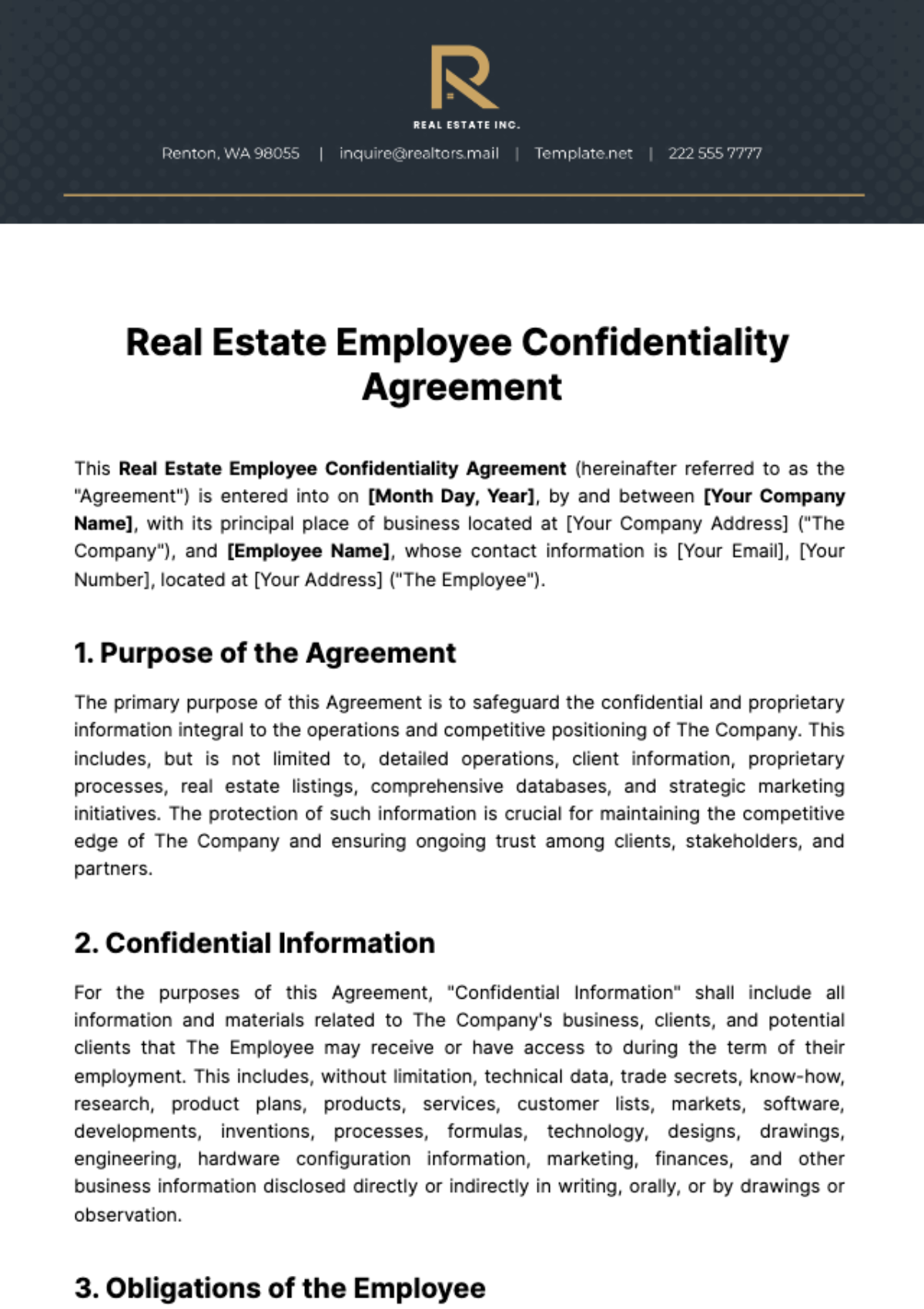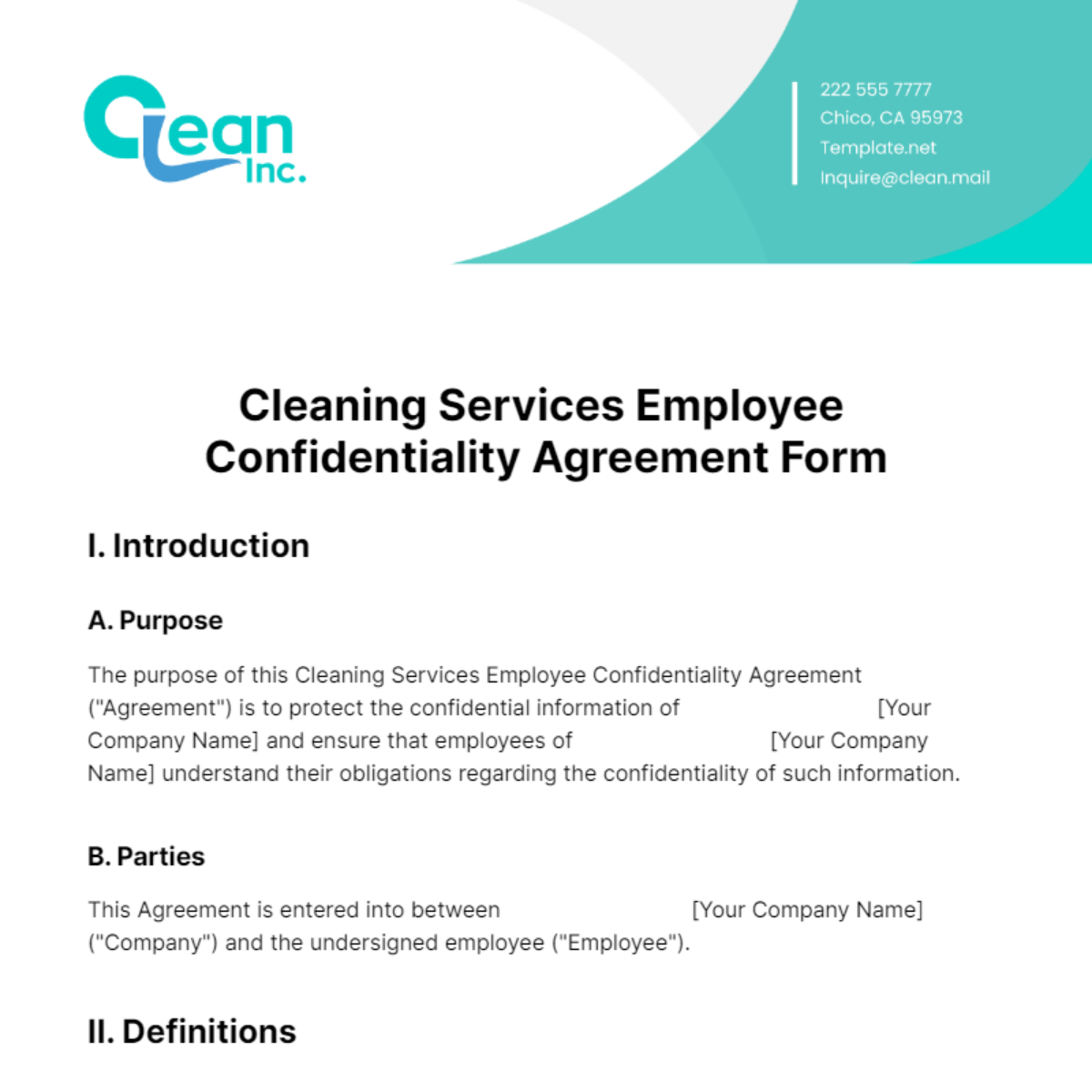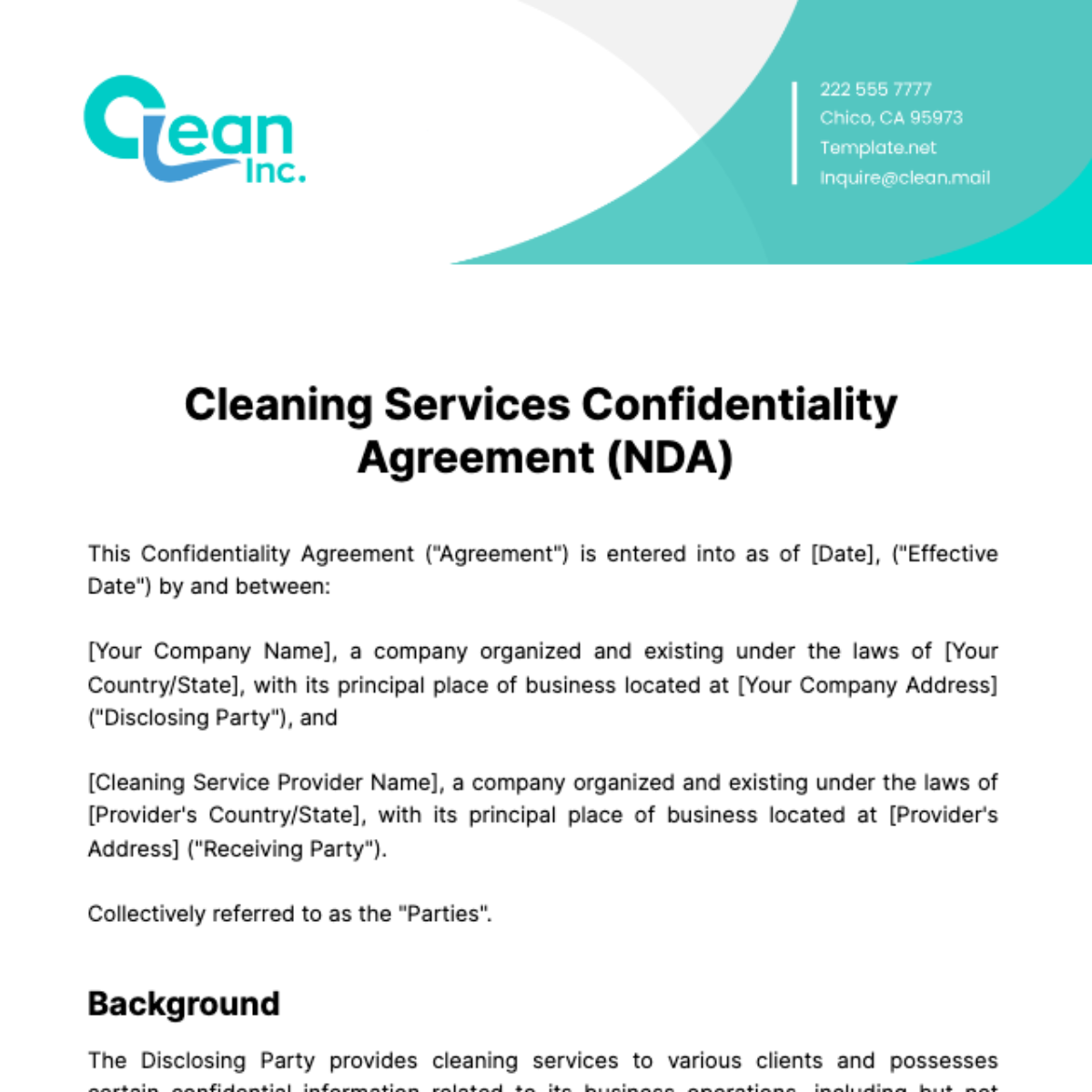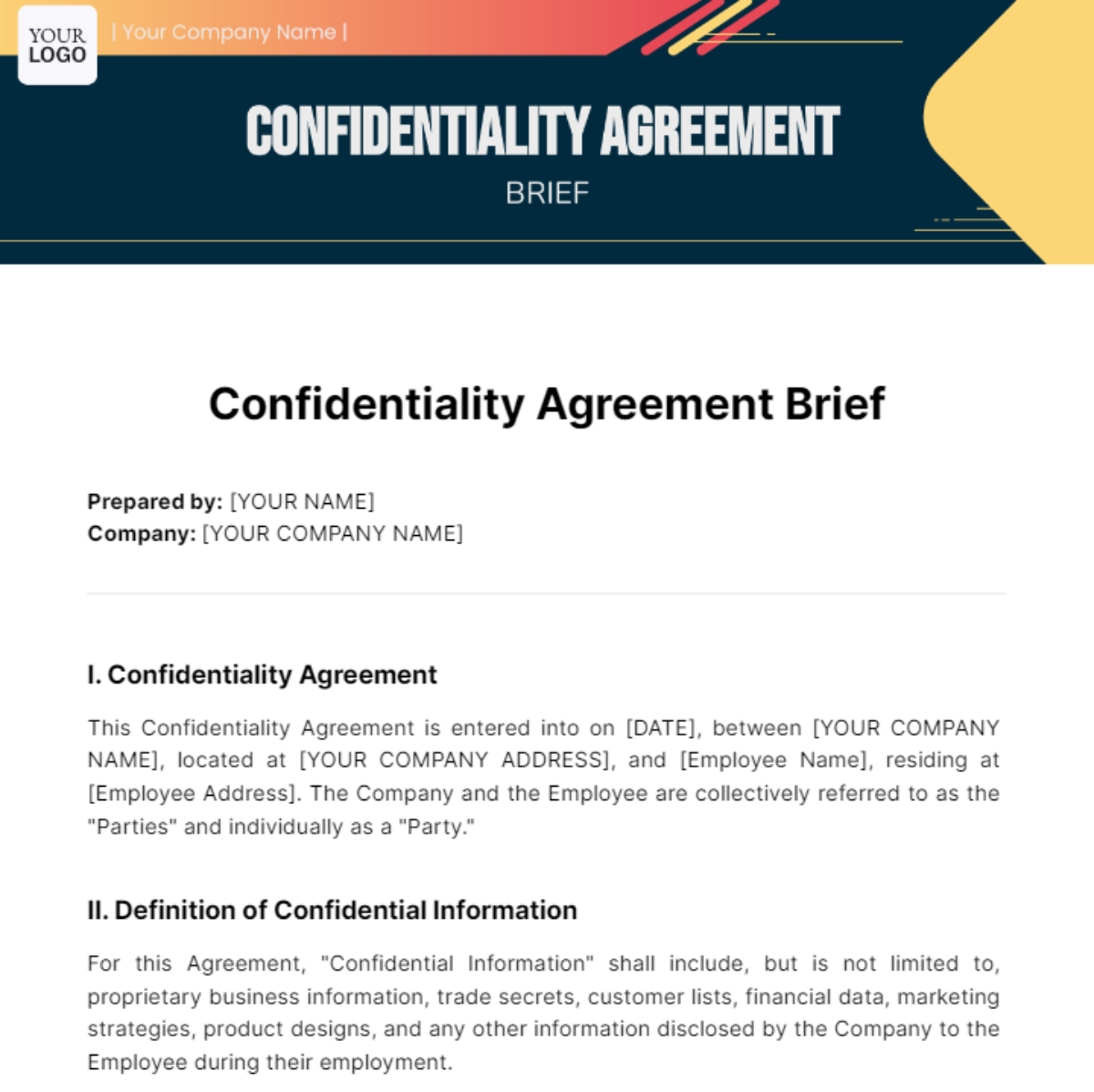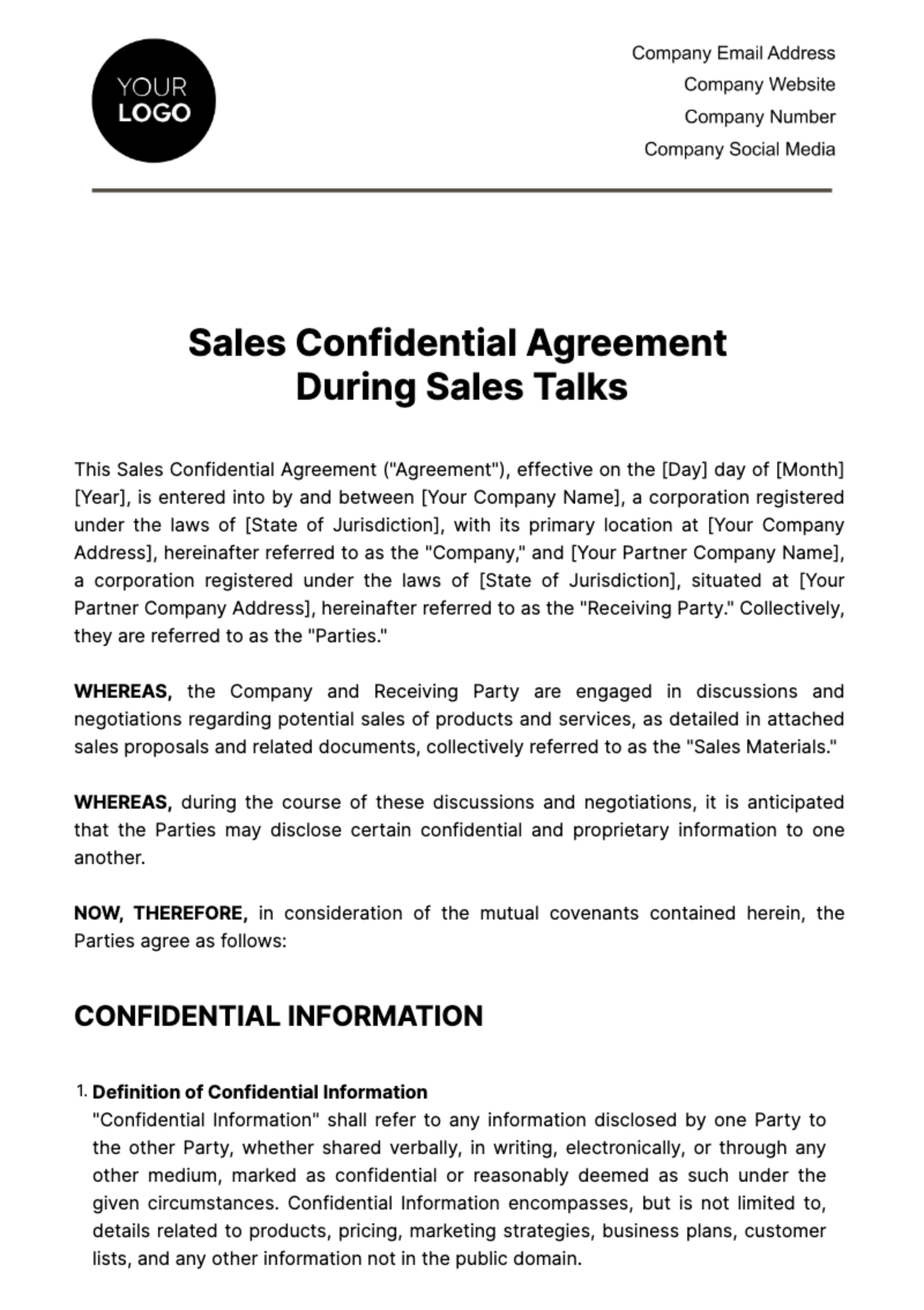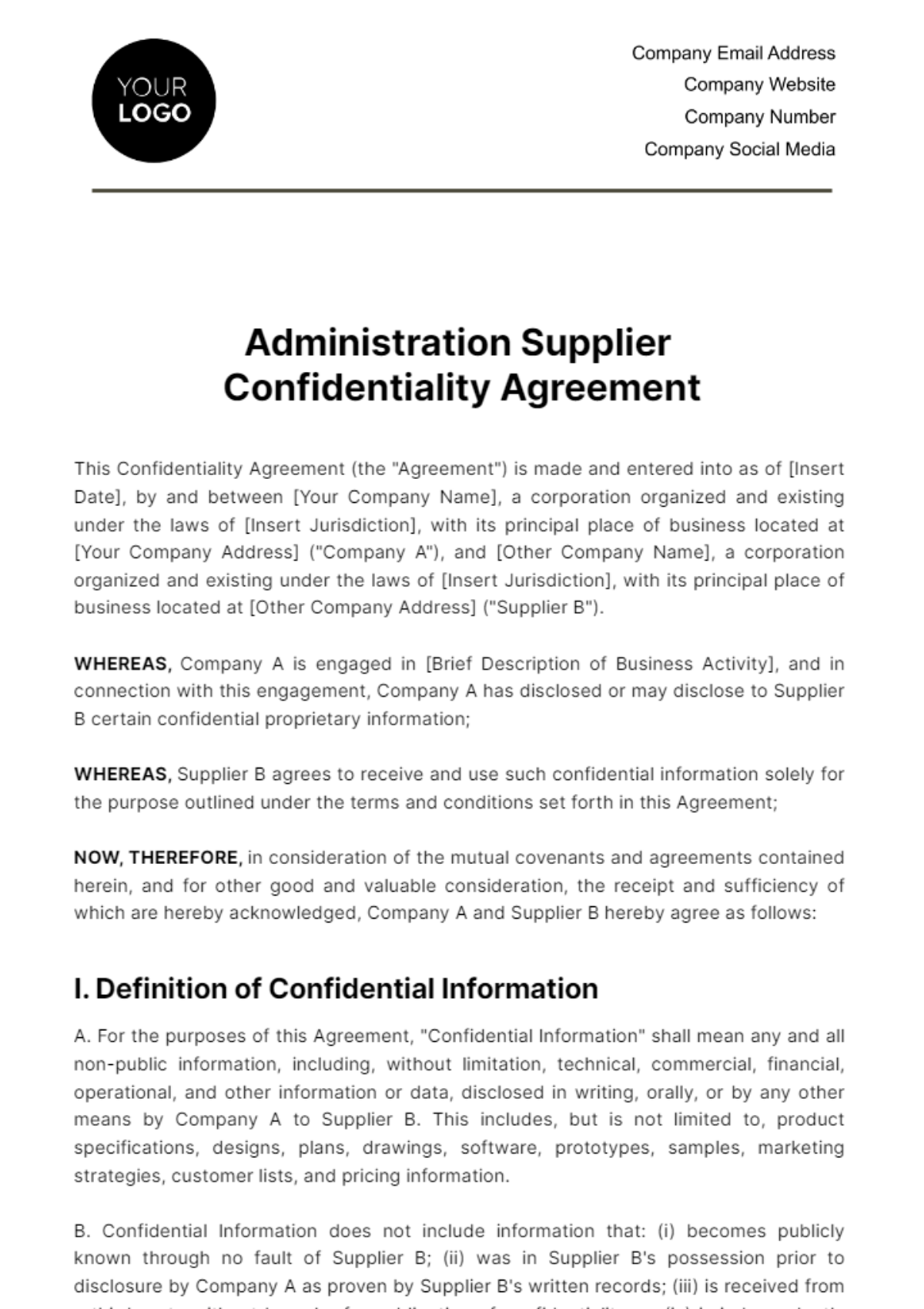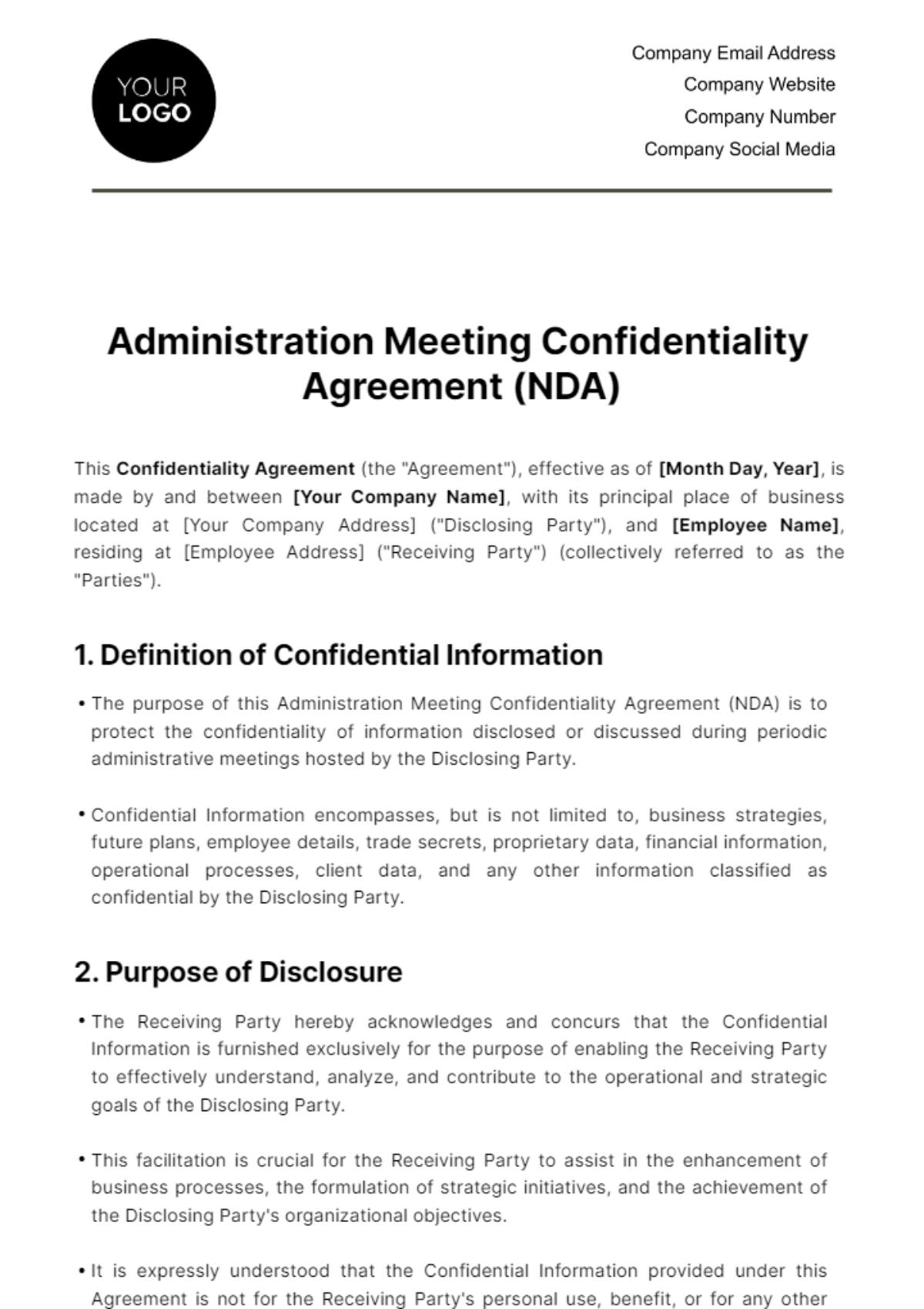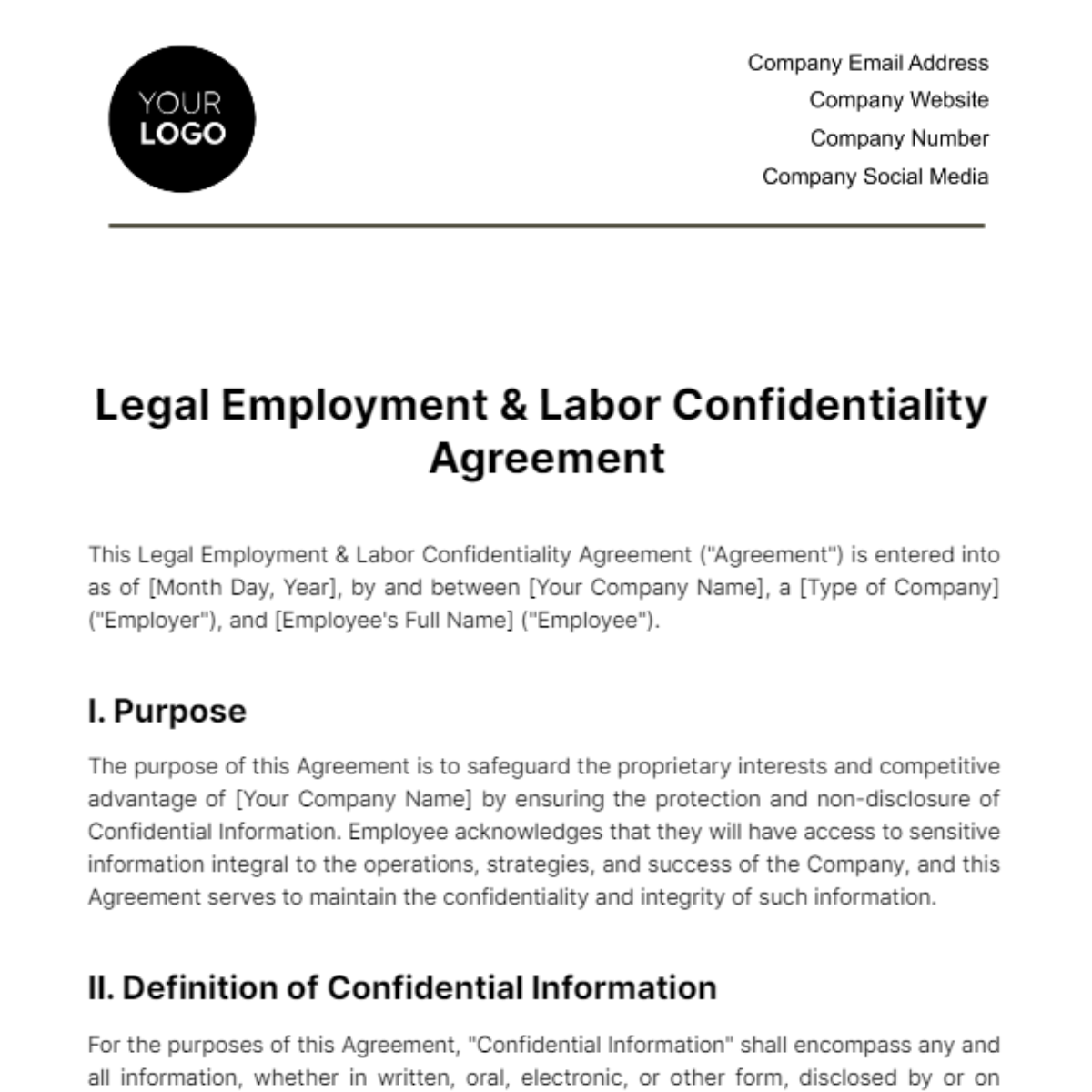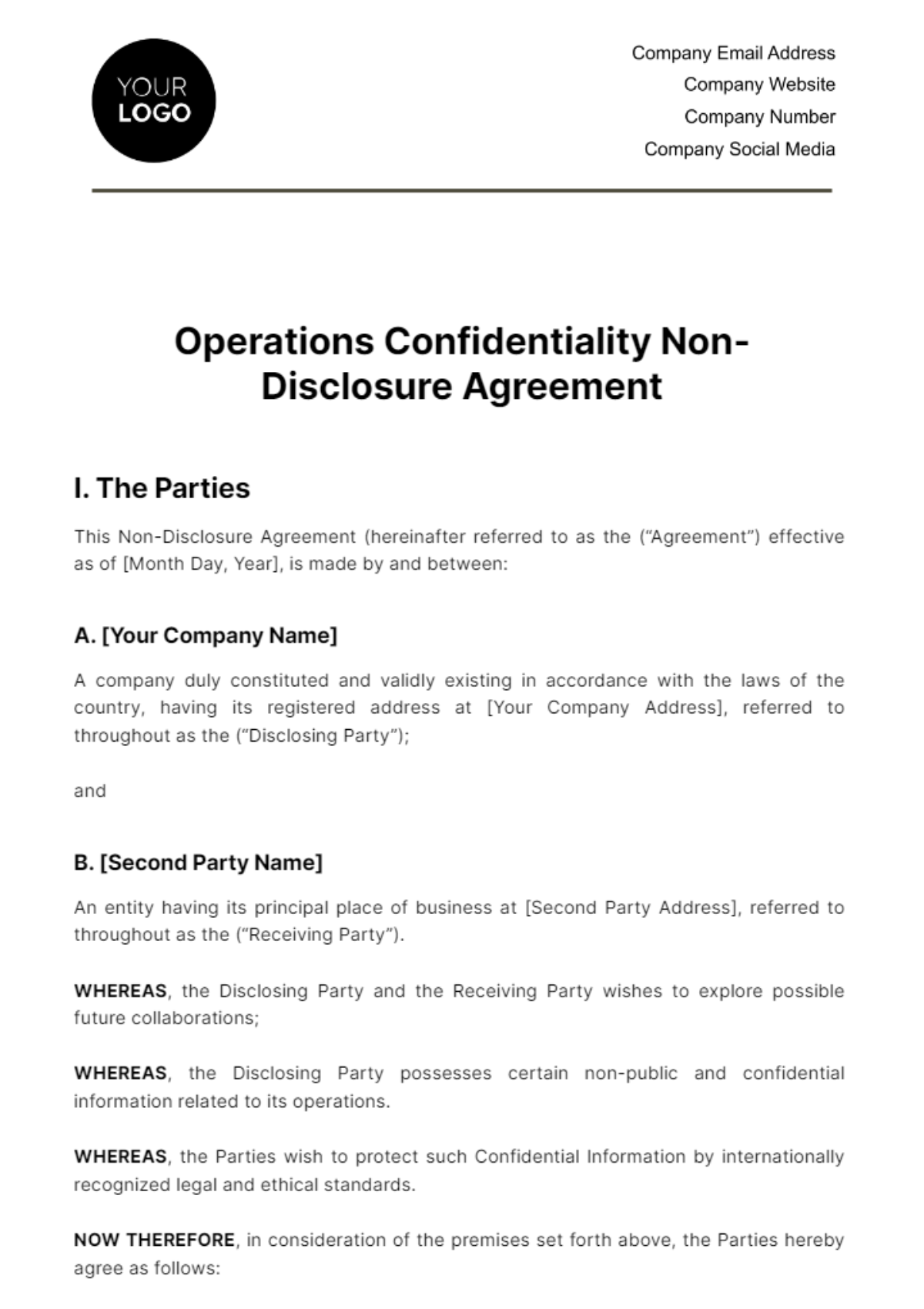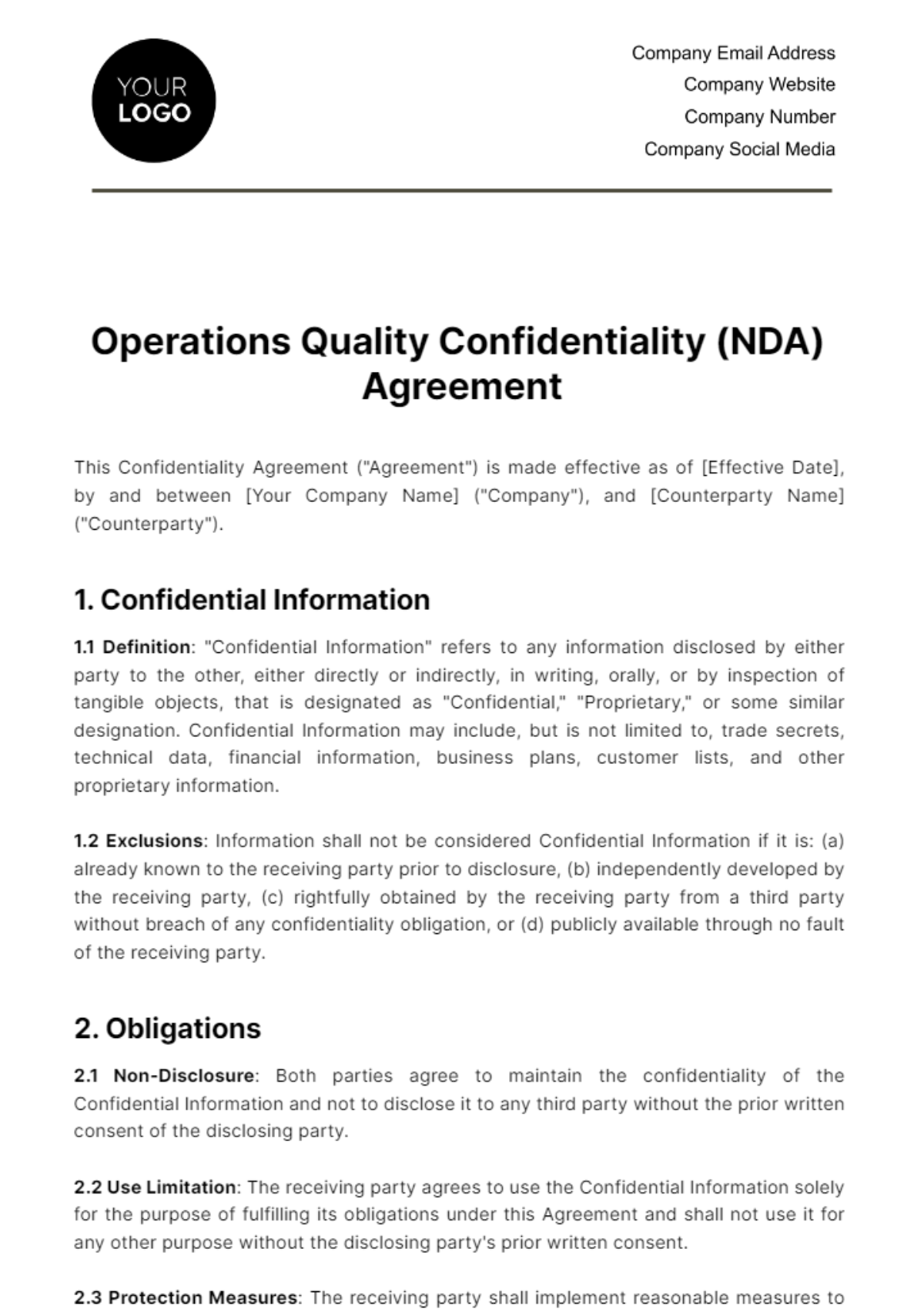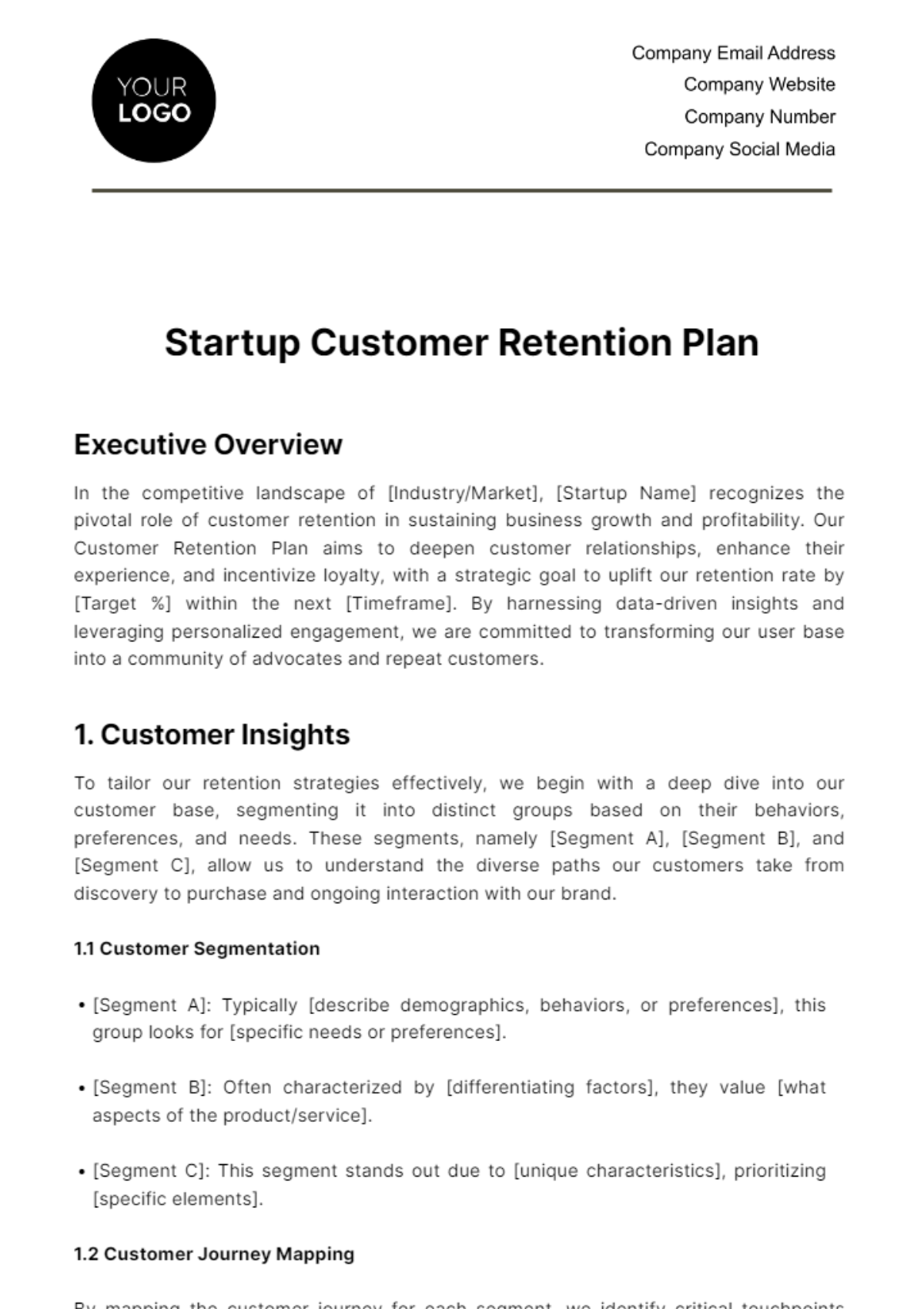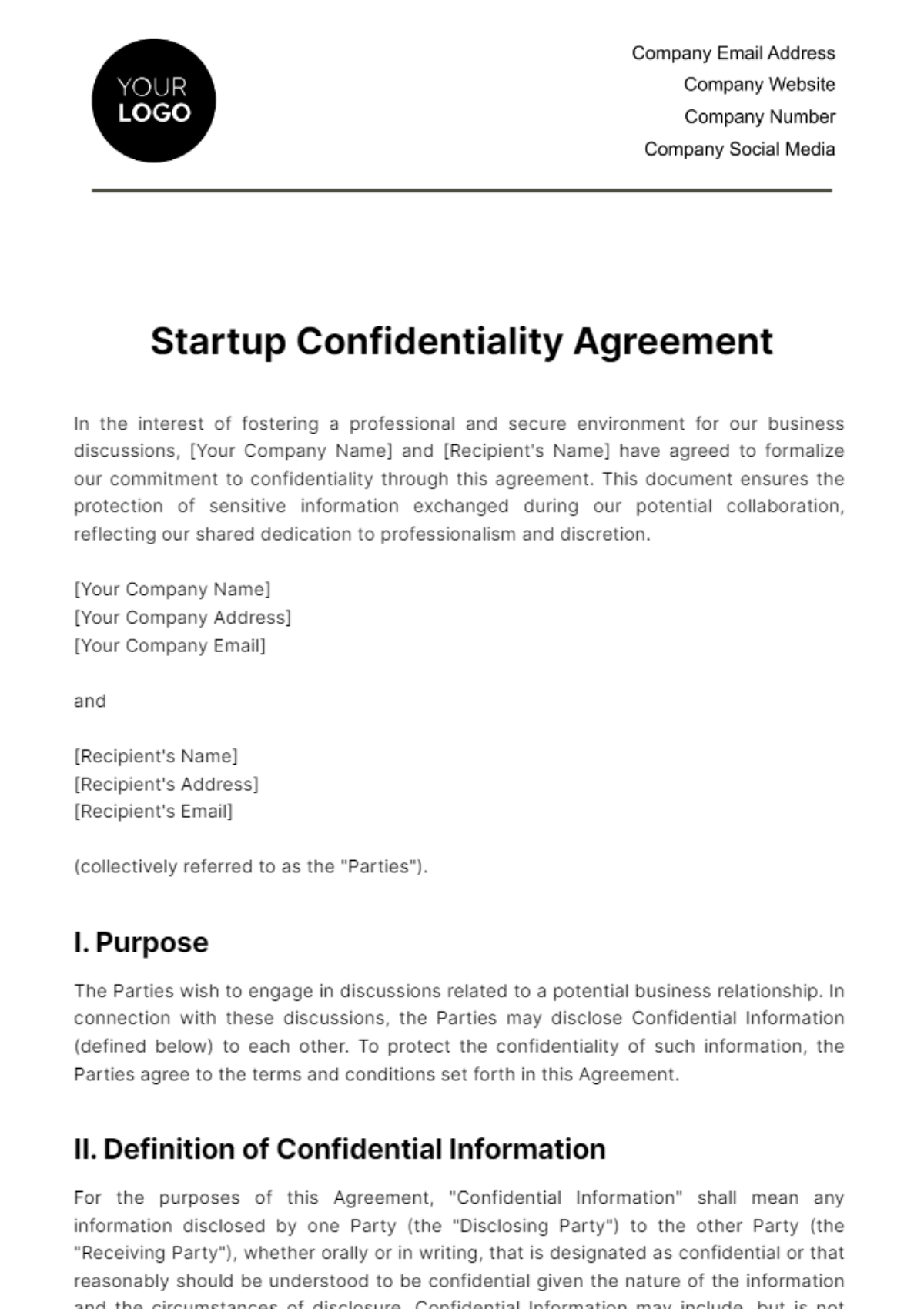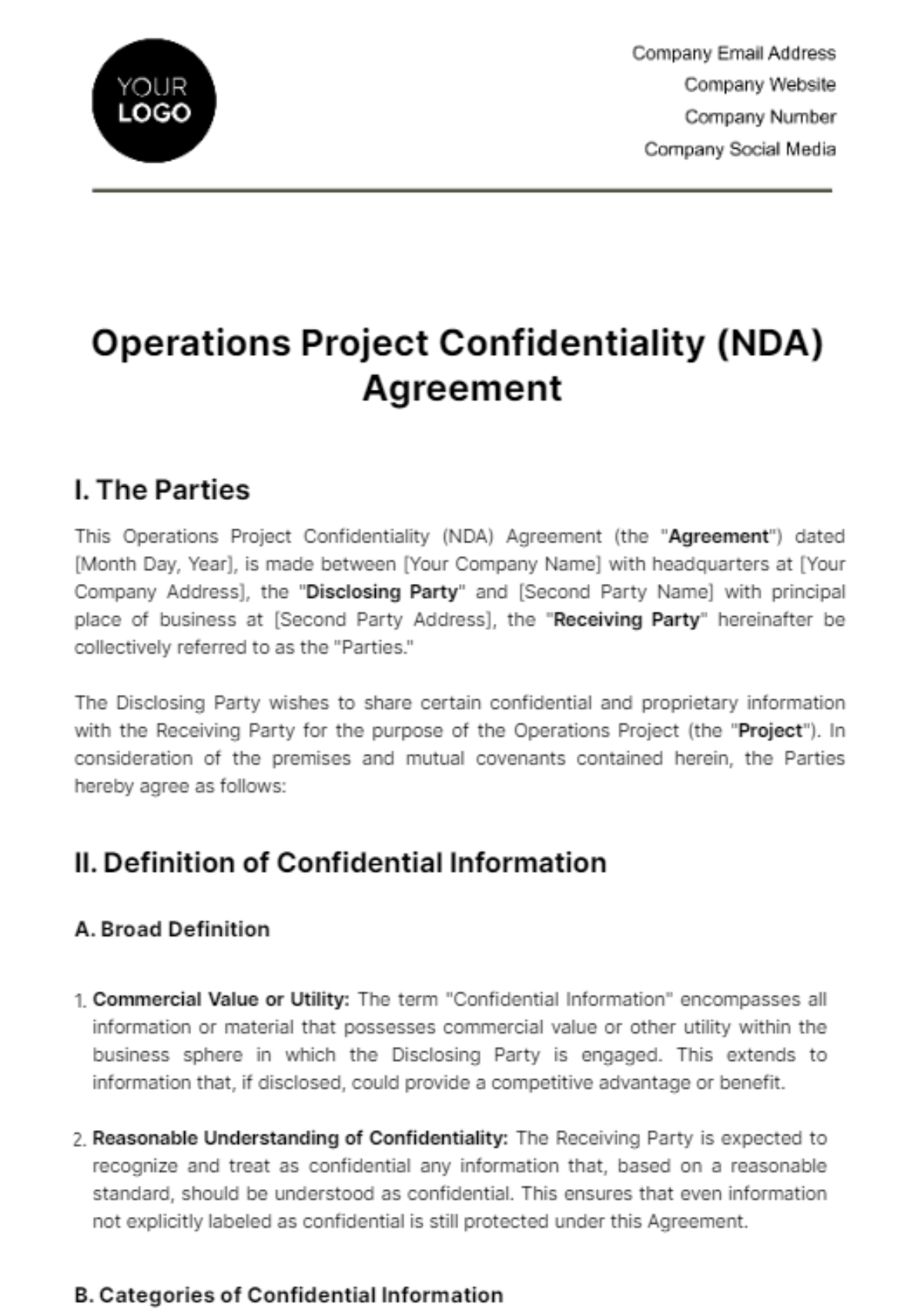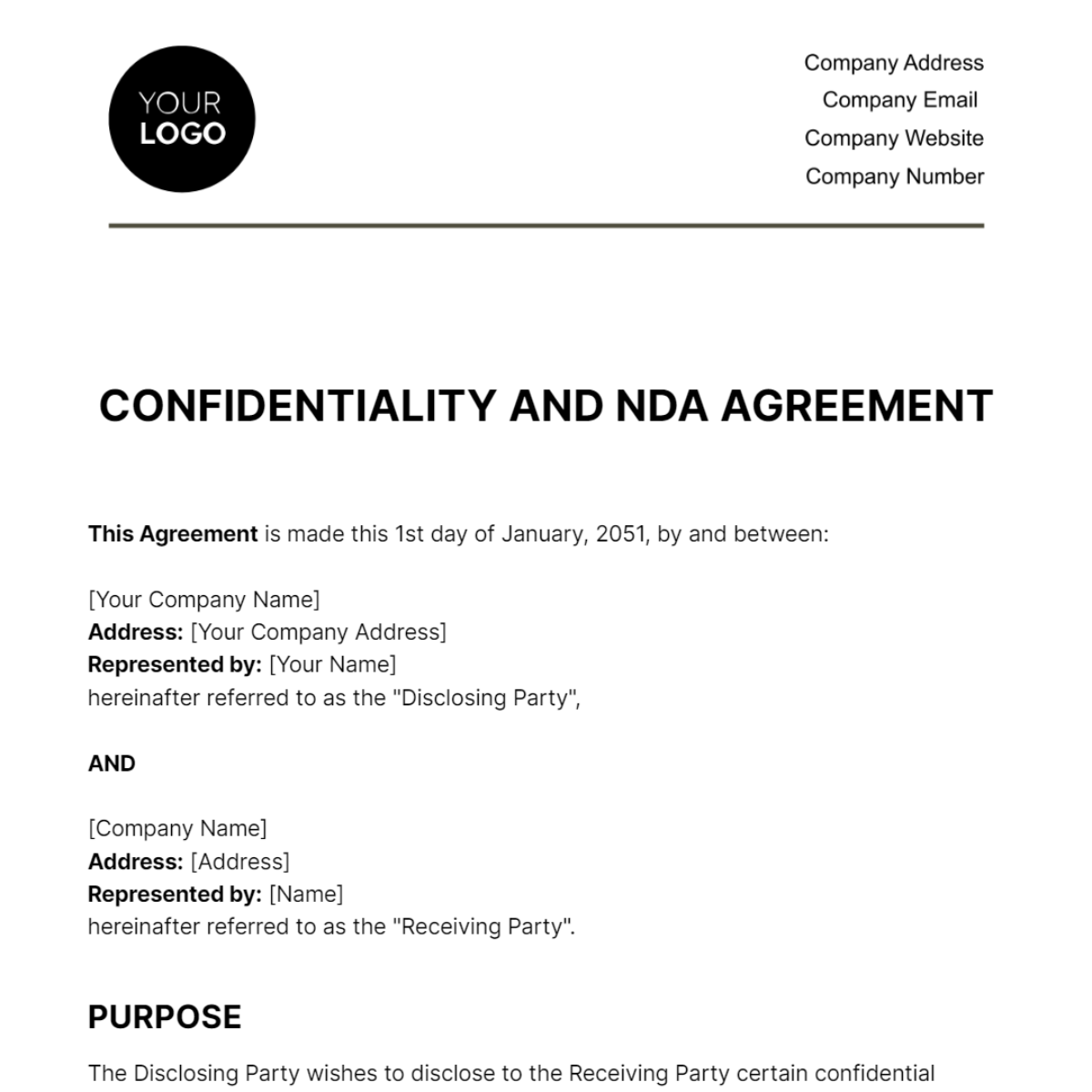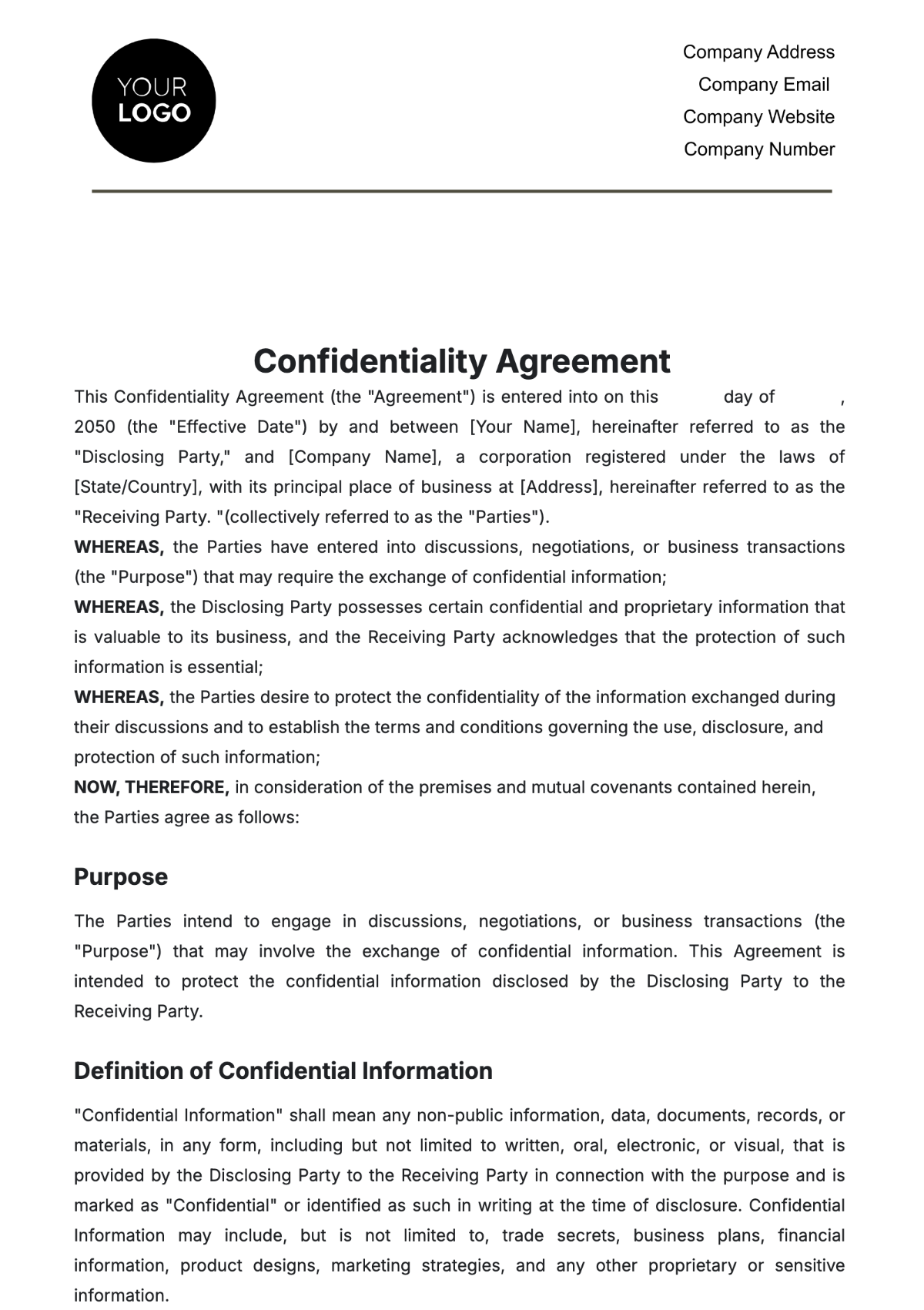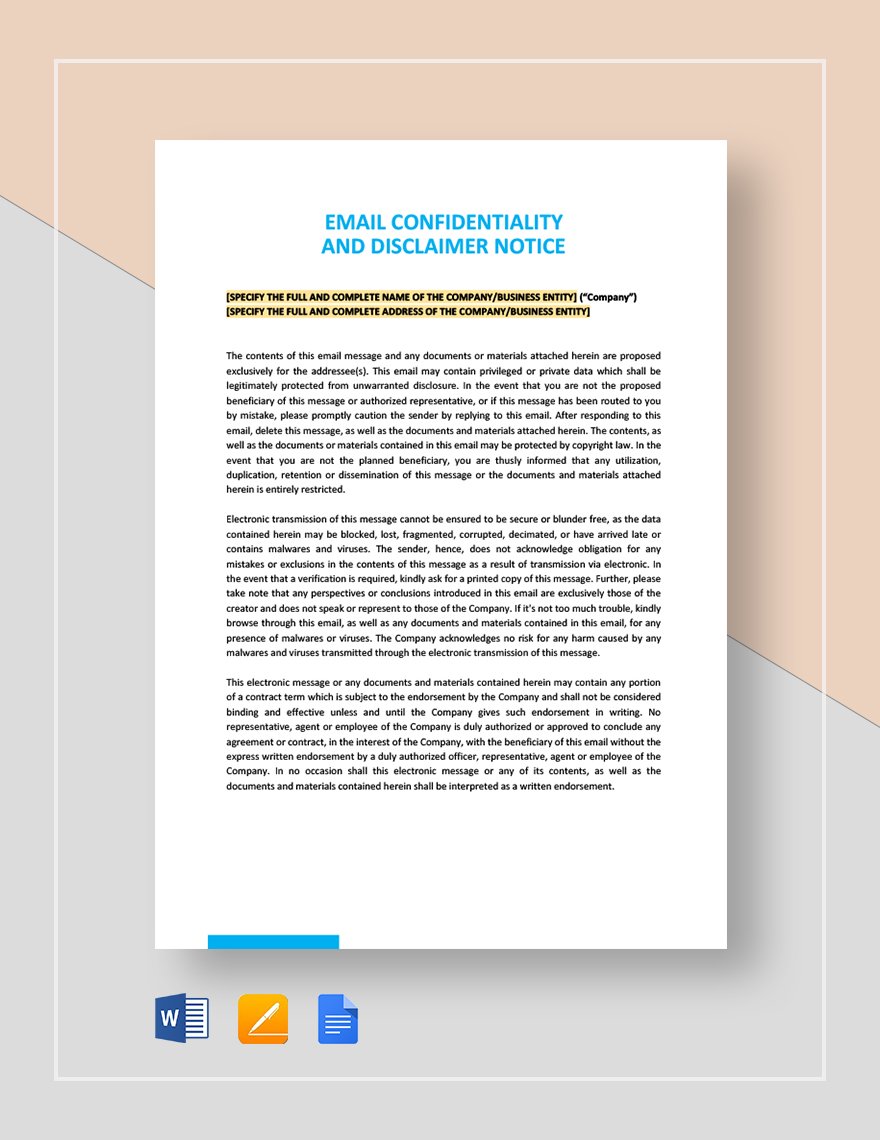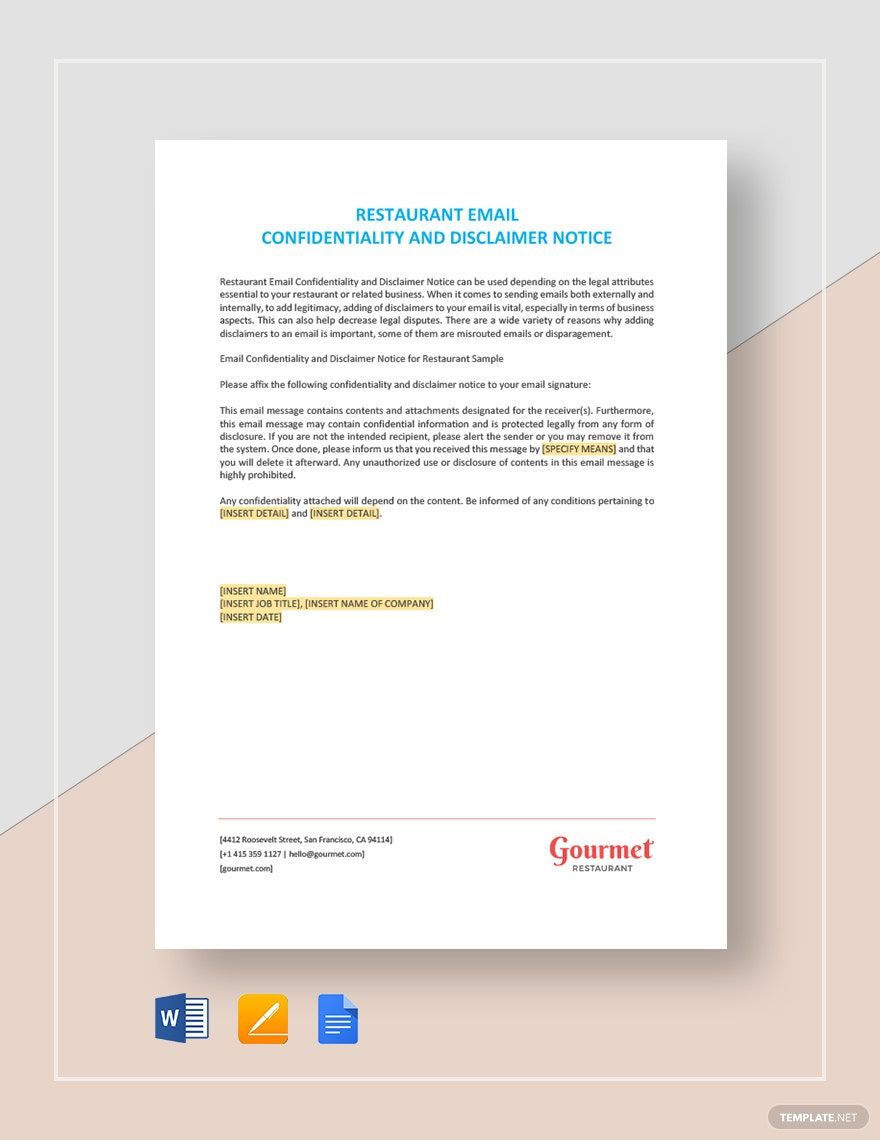Bring Your Professional Agreements to Life with Confidentiality Agreement Templates from Template.net
Keep your business partnerships secure, your employees informed, and your legal requirements seamlessly managed with Confidentiality Agreement Templates from Template.net. Designed for entrepreneurs, business professionals, and legal advisors, these templates allow you to craft comprehensive agreements tailored to your specific needs. Whether you're formalizing a new business partnership or creating NDAs for new hires, our templates provide the clarity and professionalism your transactions demand. Each template comes with essential sections like time/date, parties involved, and confidentiality clauses, ensuring all necessary information is covered. With no legal expertise required and professional-grade layouts, you can easily print or distribute your agreements in a matter of minutes.
Discover the many Confidentiality Agreement Templates we have on hand to suit a wide variety of needs. Choose a template that fits your situation, then effortlessly customize it by swapping in your specific company details, names, and logos. Enhance the appearance by tweaking colors and fonts, making the agreements unique to your brand. Our user-friendly interface allows for dragging-and-dropping of icons and graphics, while AI-powered text tools suggest changes to optimize clarity and impact. The possibilities are virtually endless, making the process both enjoyable and frustration-free. With regularly updated templates and an extensive library, you’ll always find modern and relevant options. When you're finished, download or share your agreements via email or print. It's never been easier to safeguard your business interests with expertly designed confidentiality agreements.


